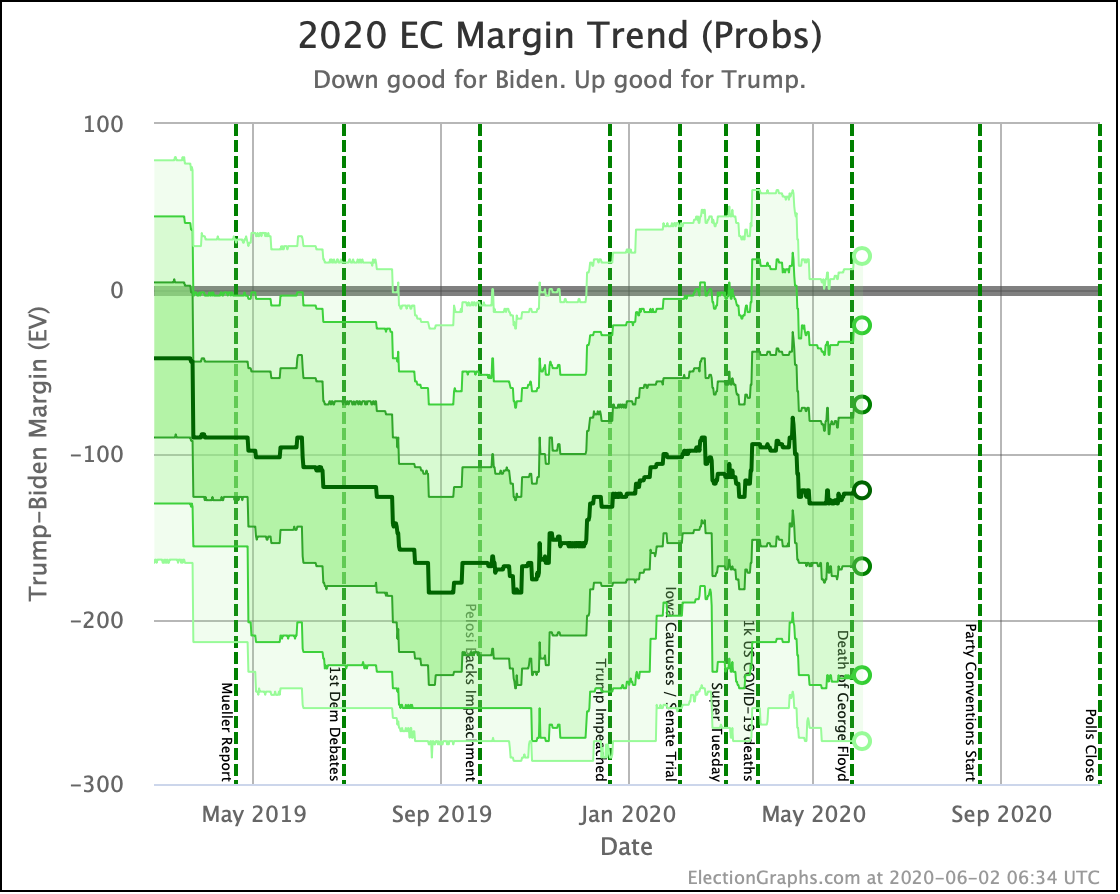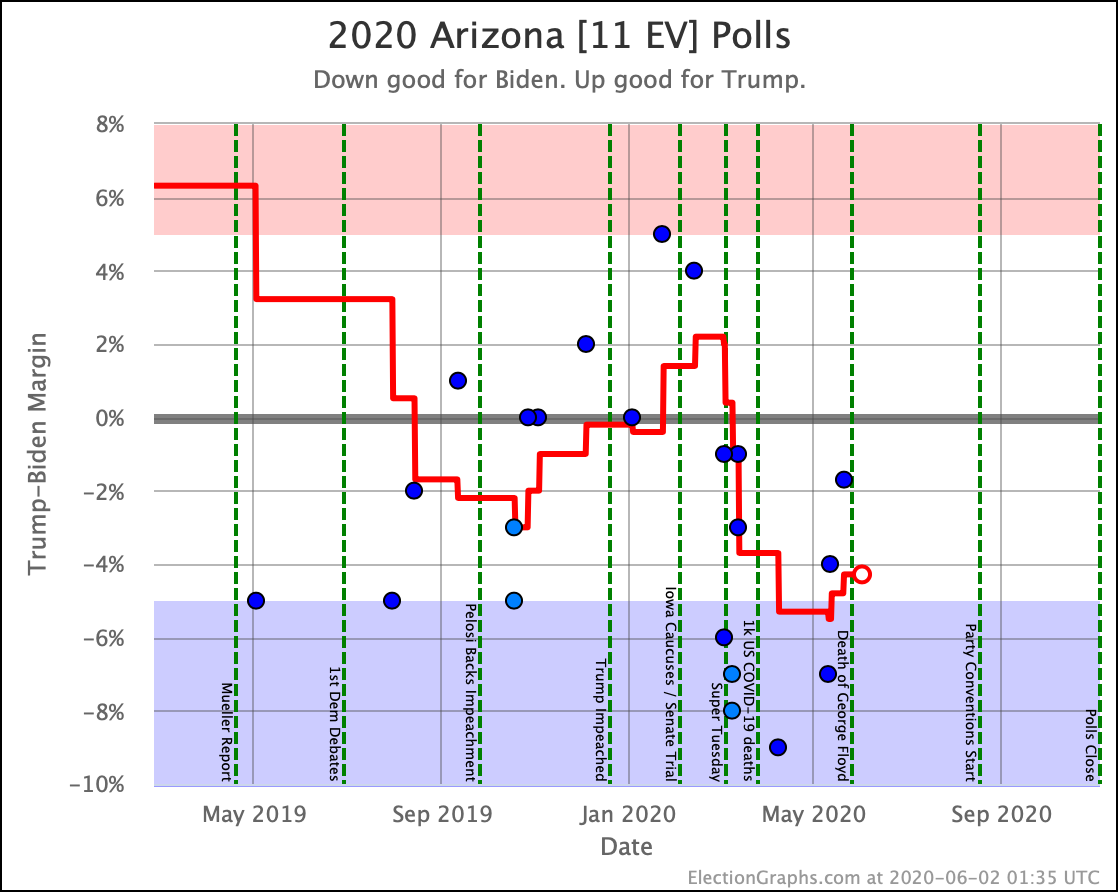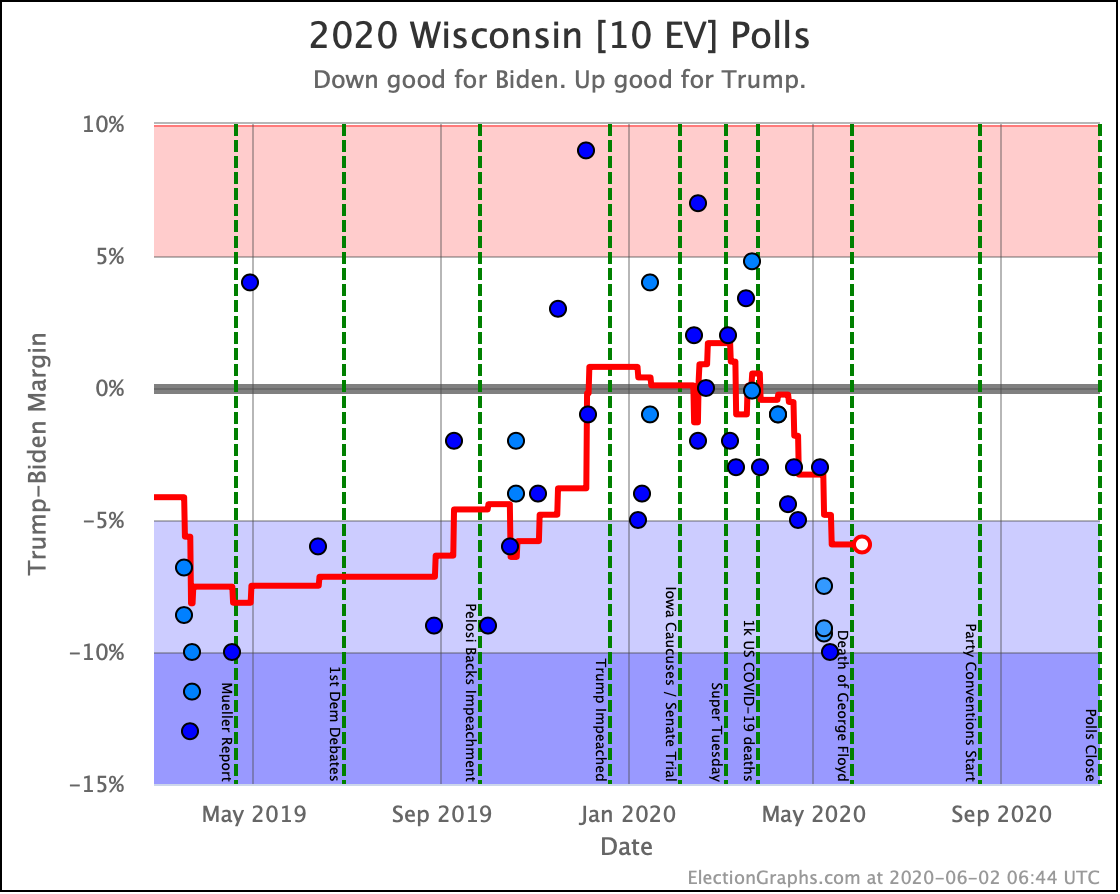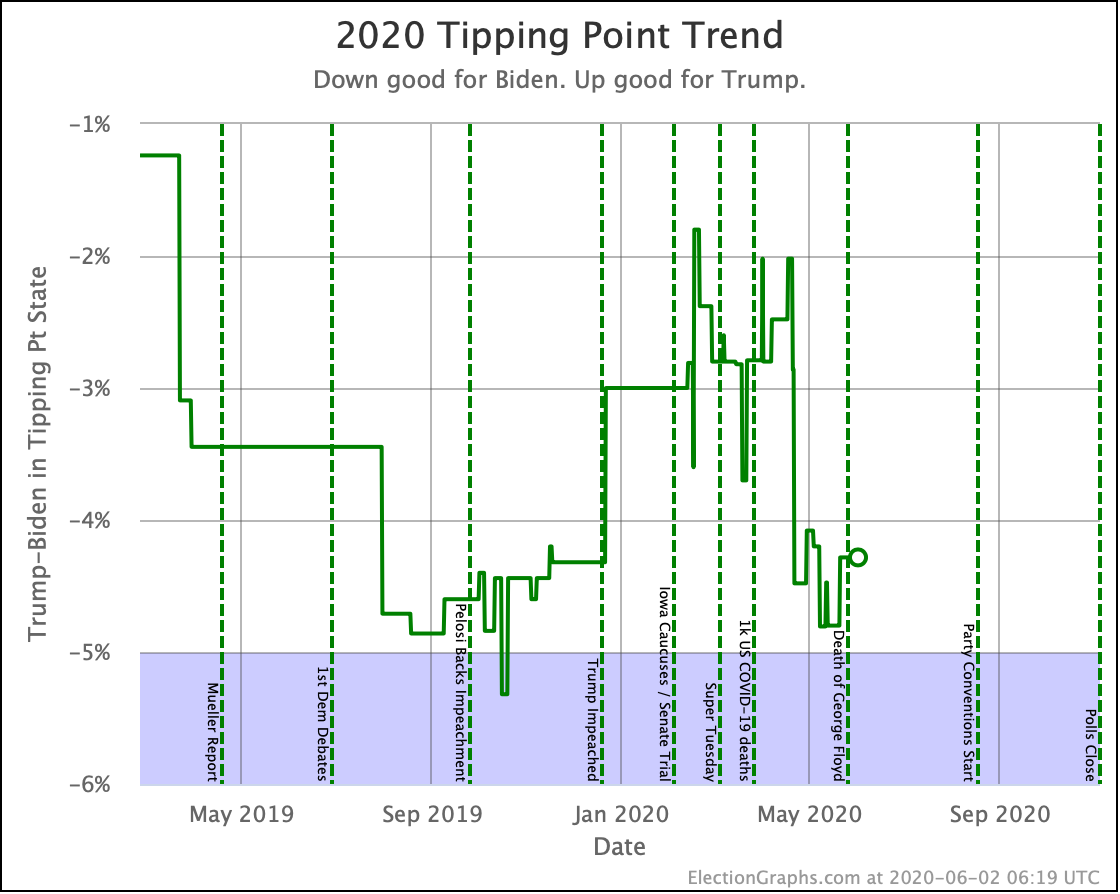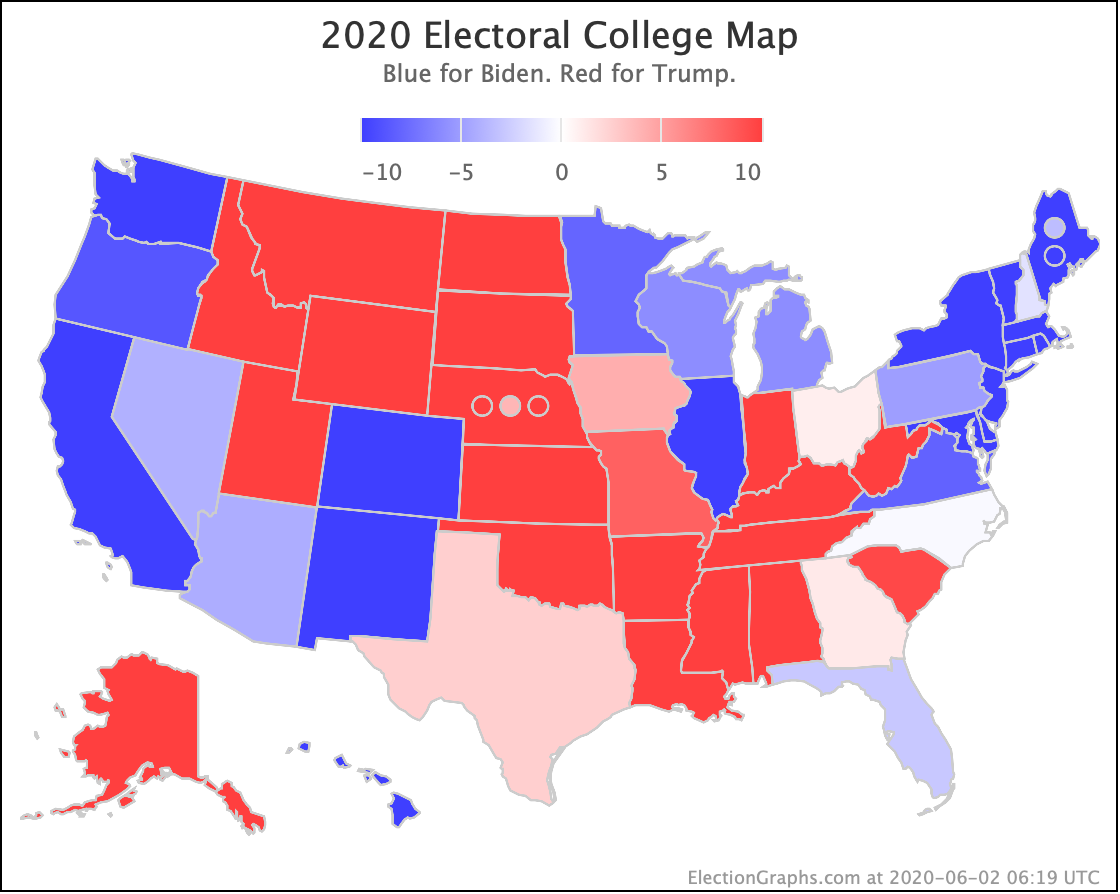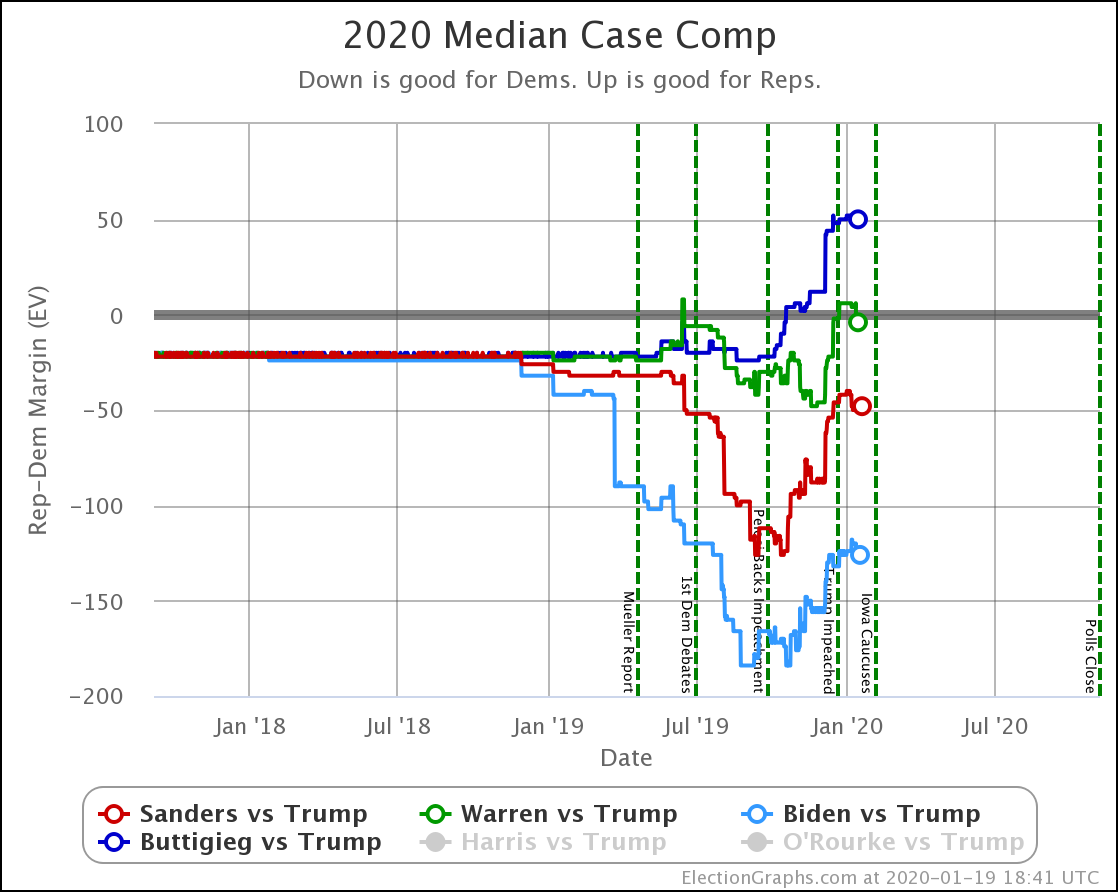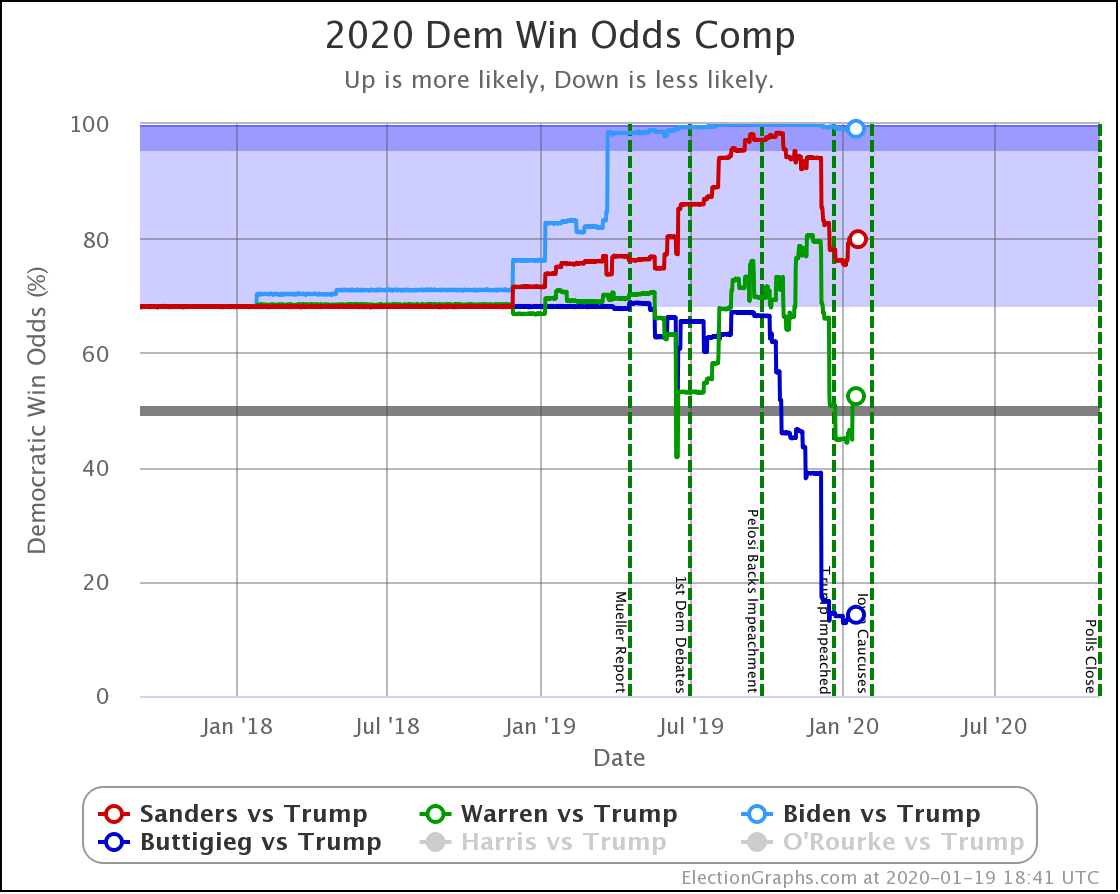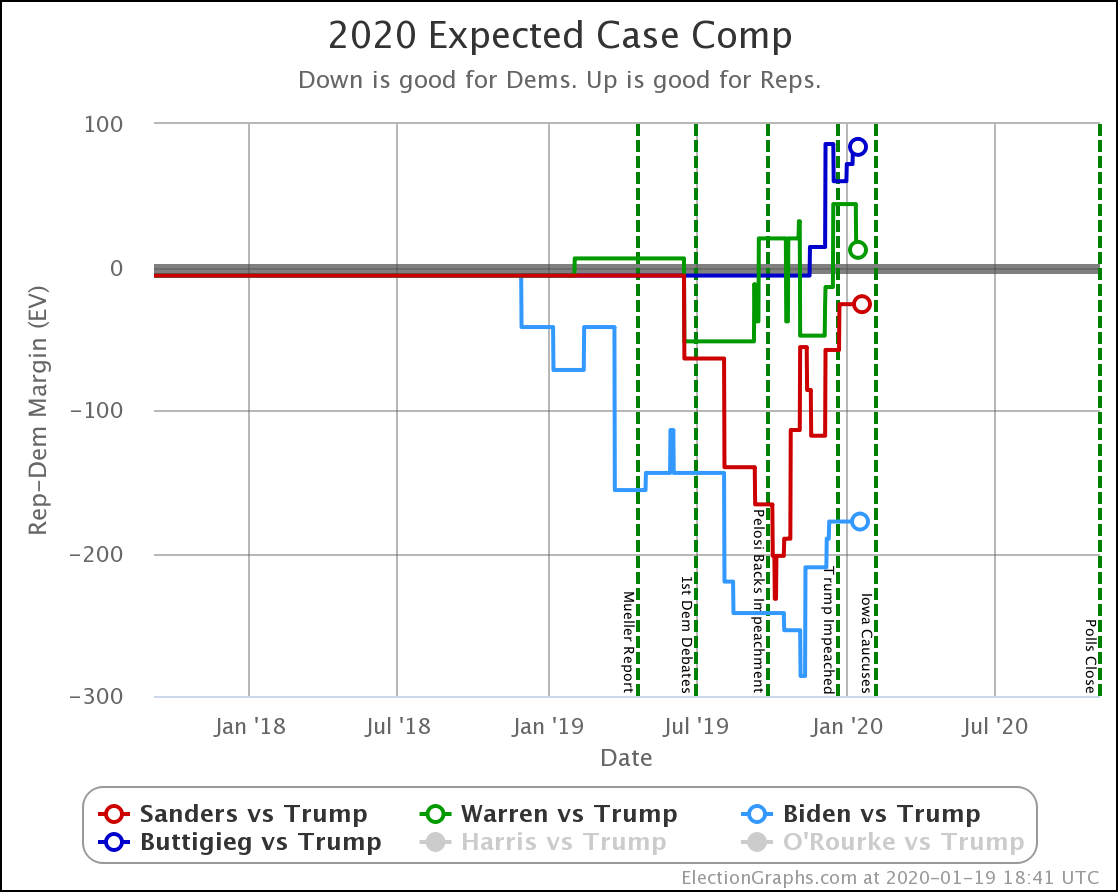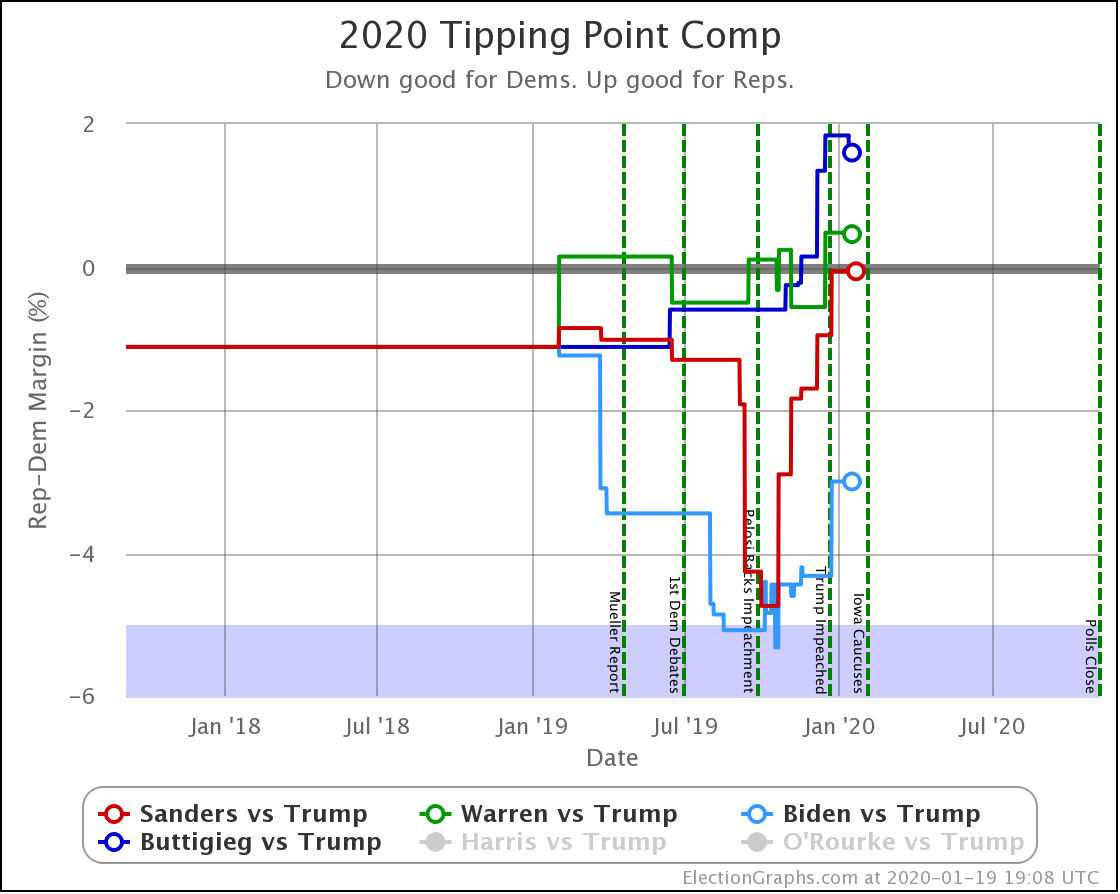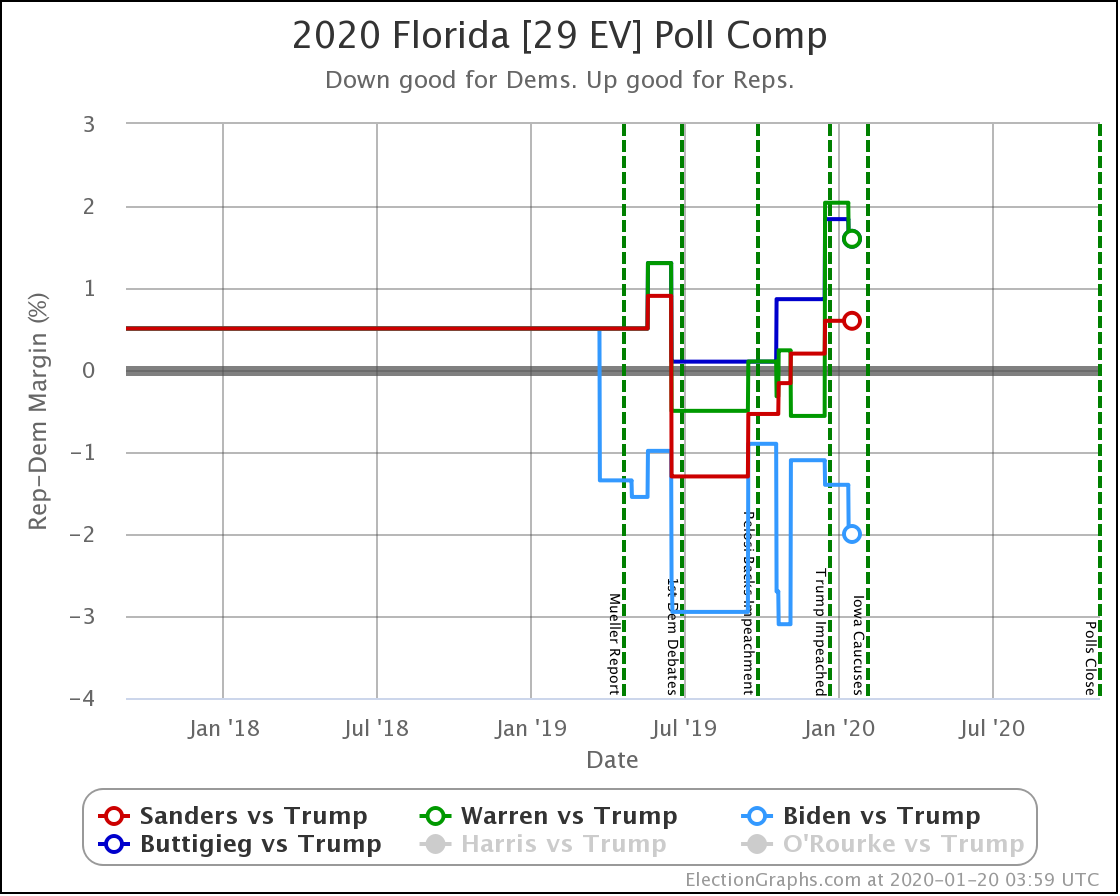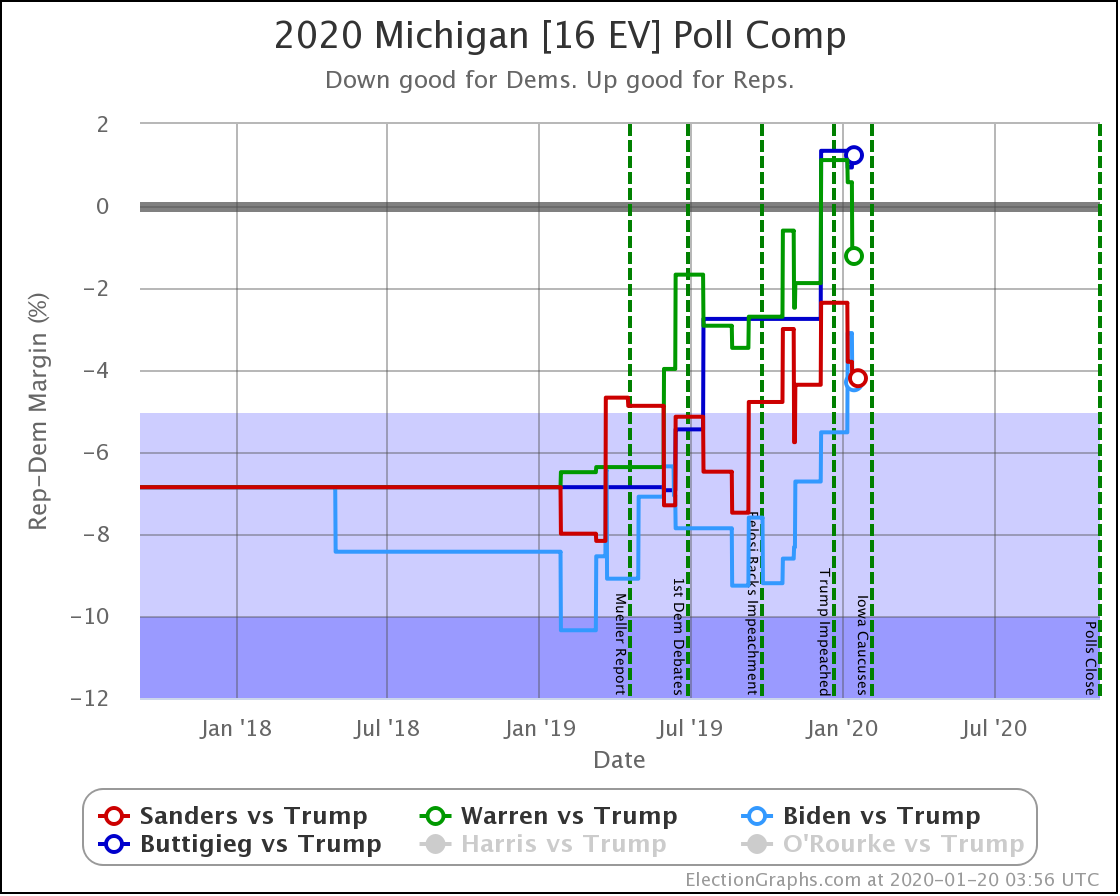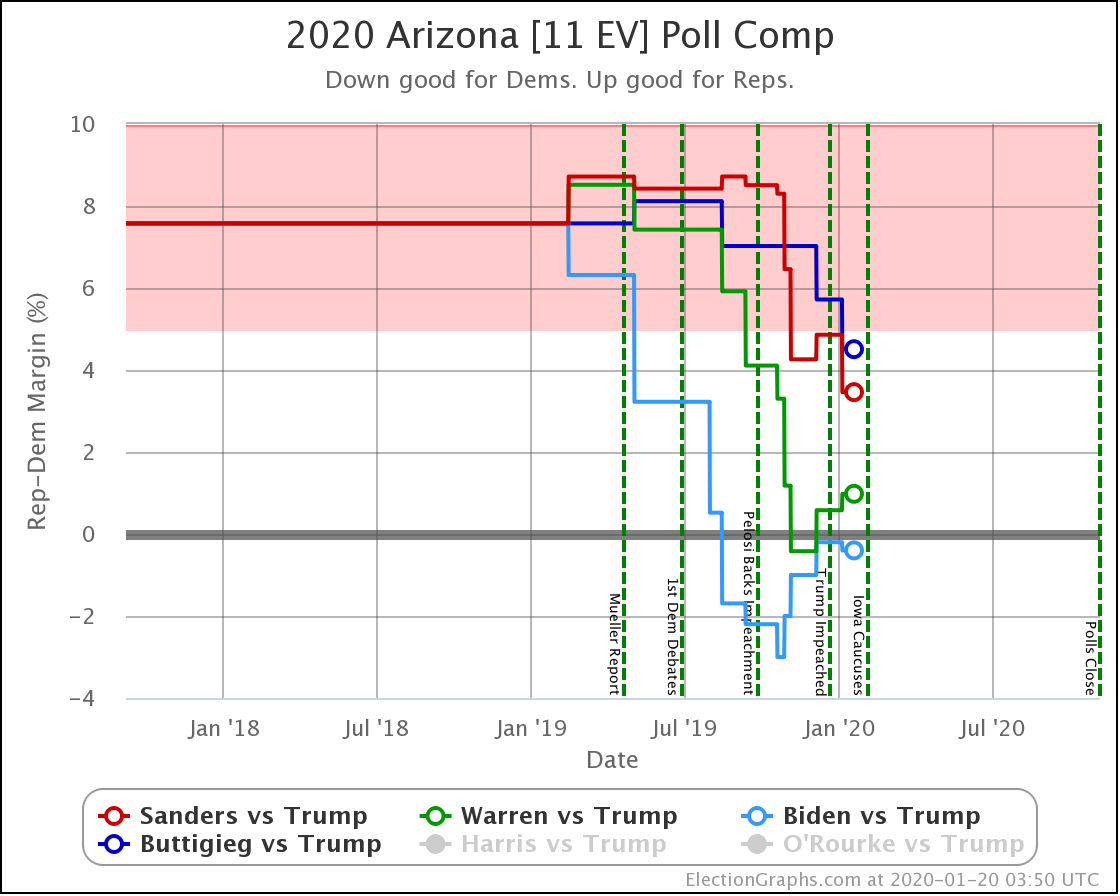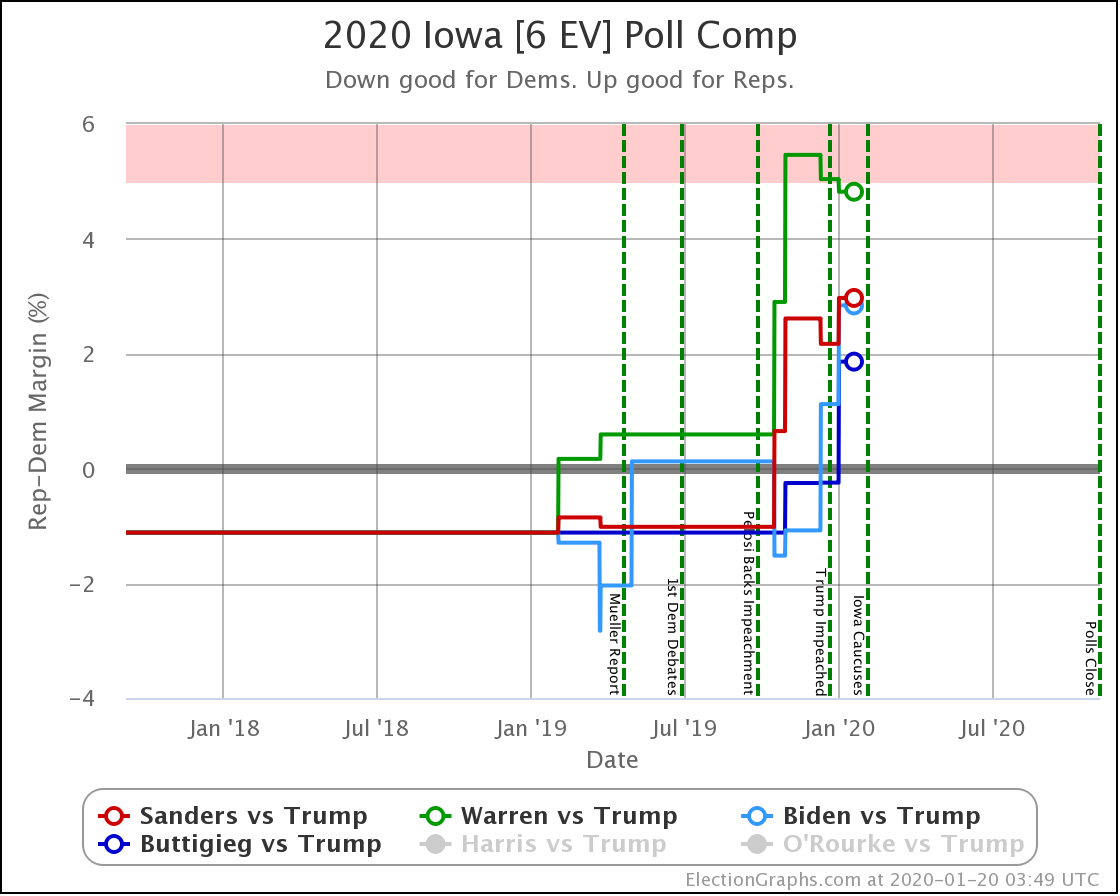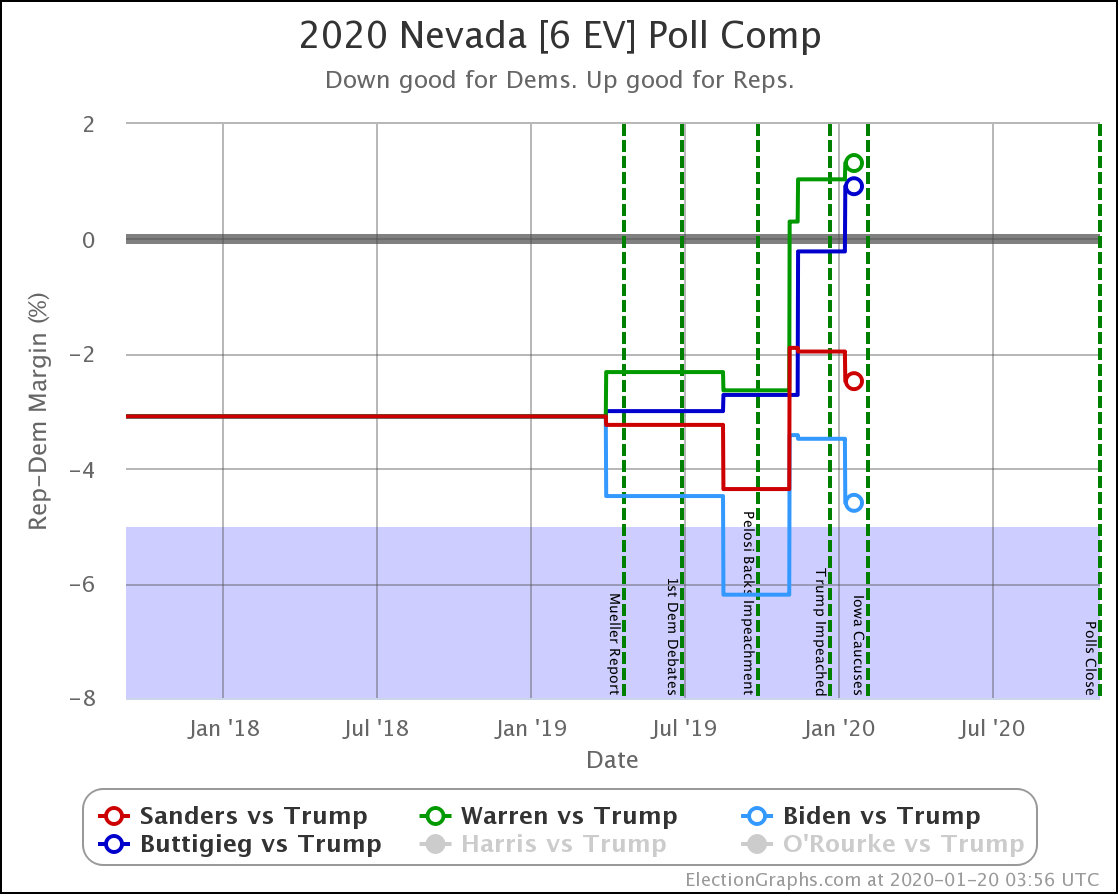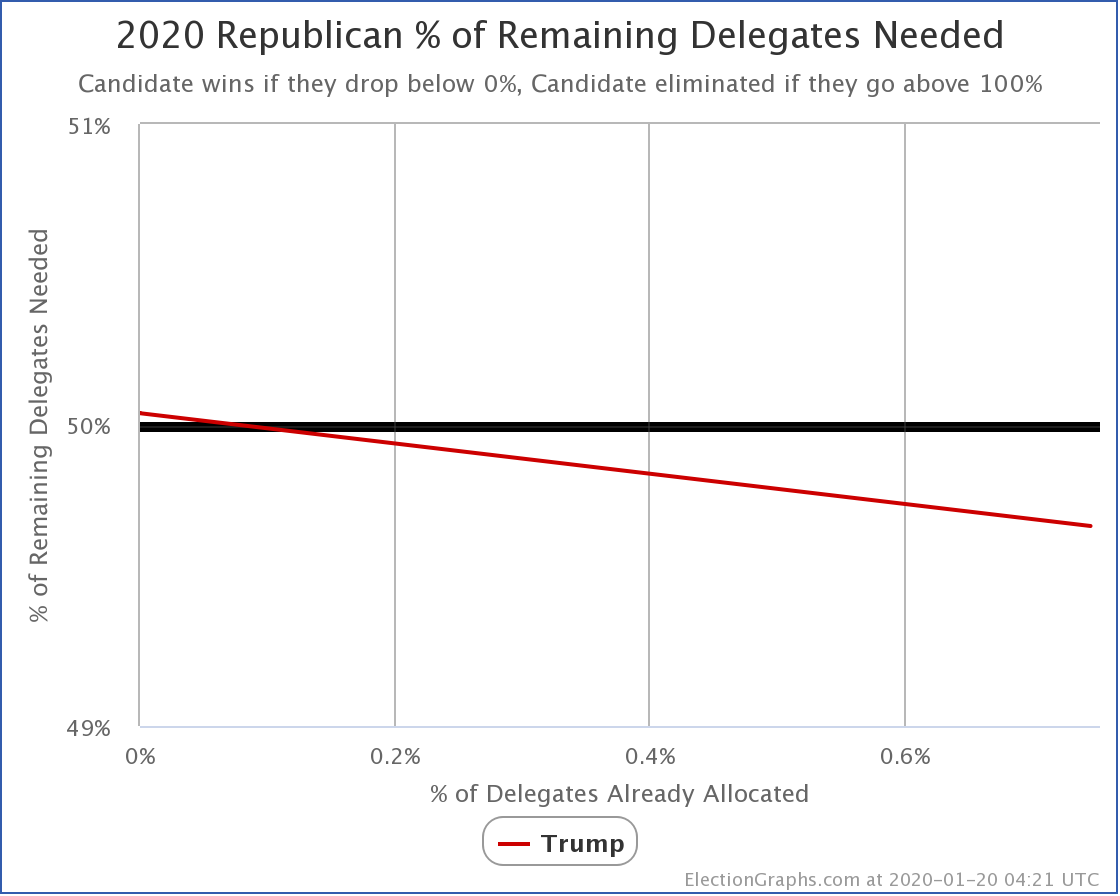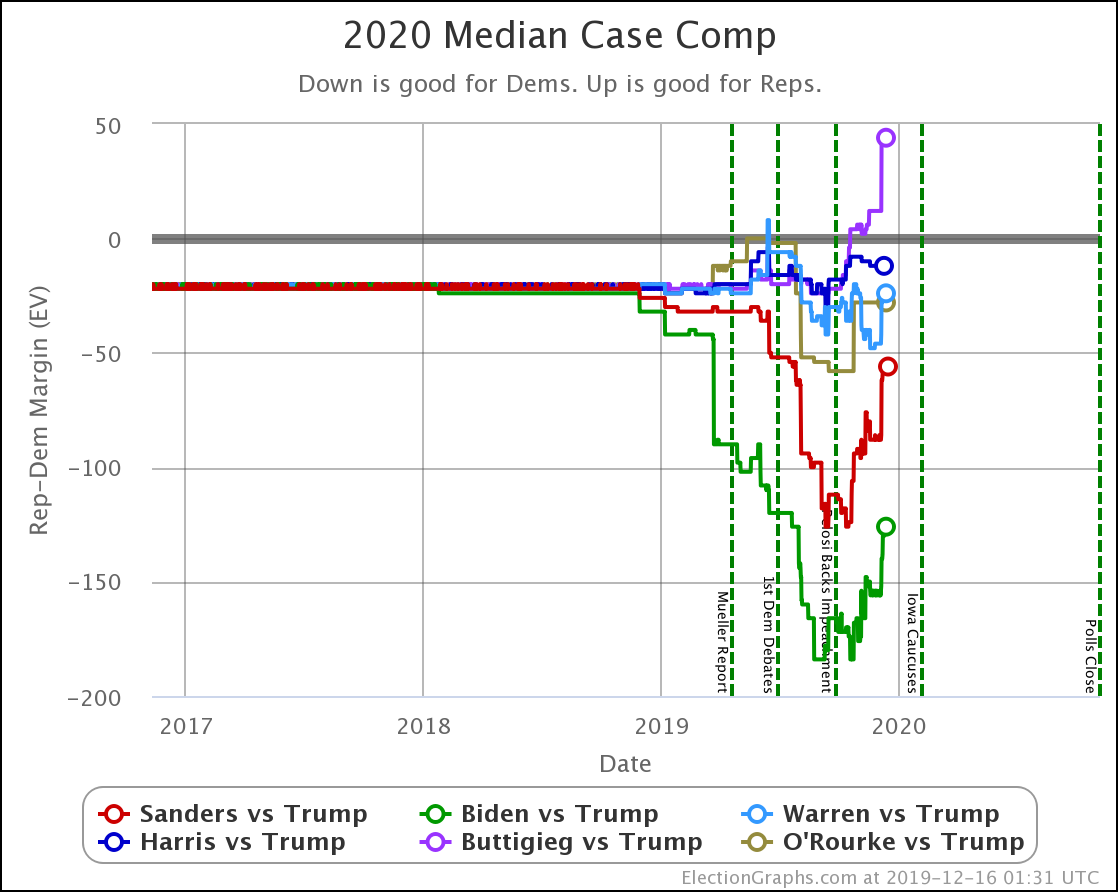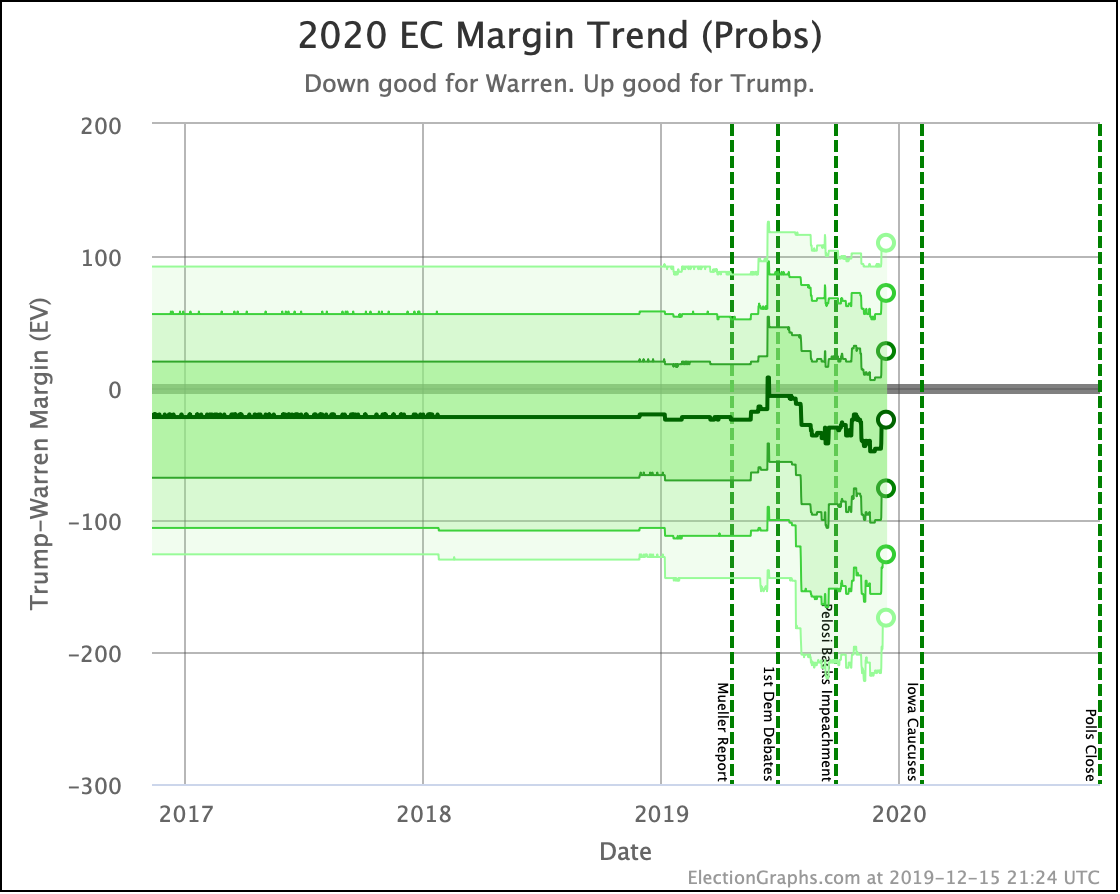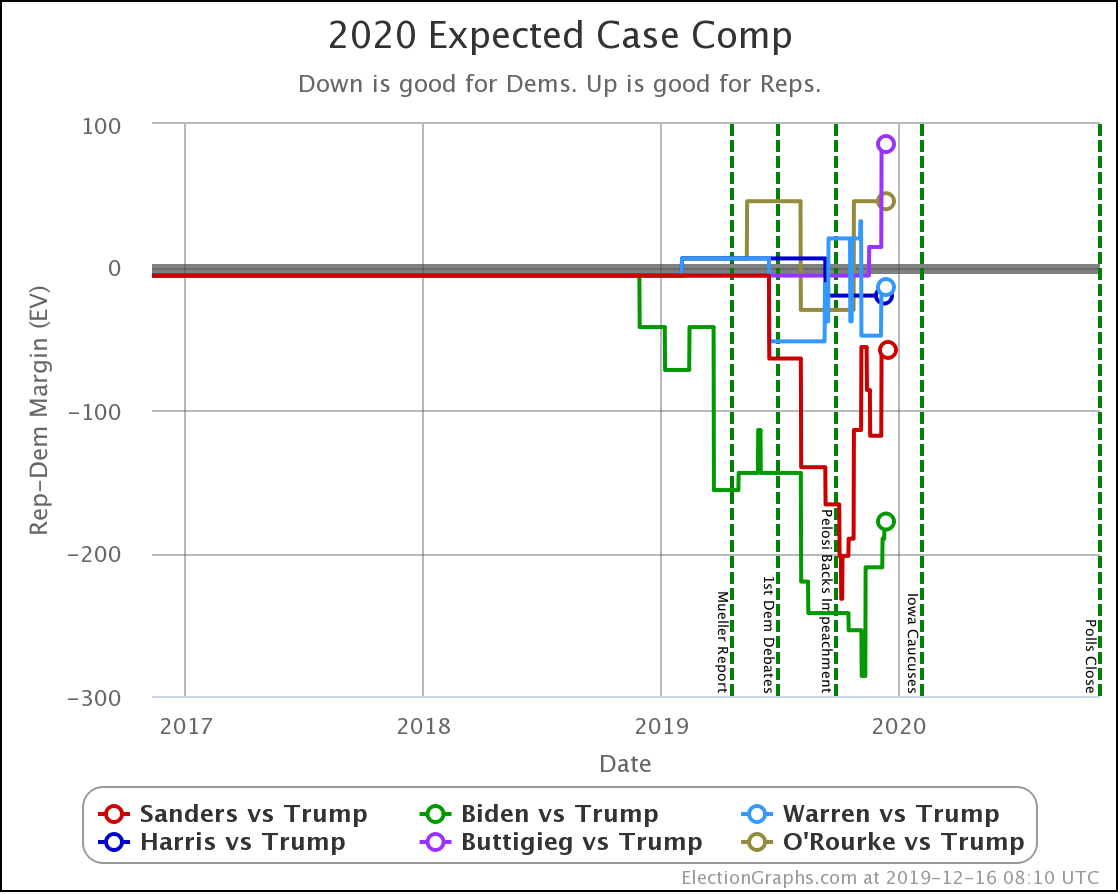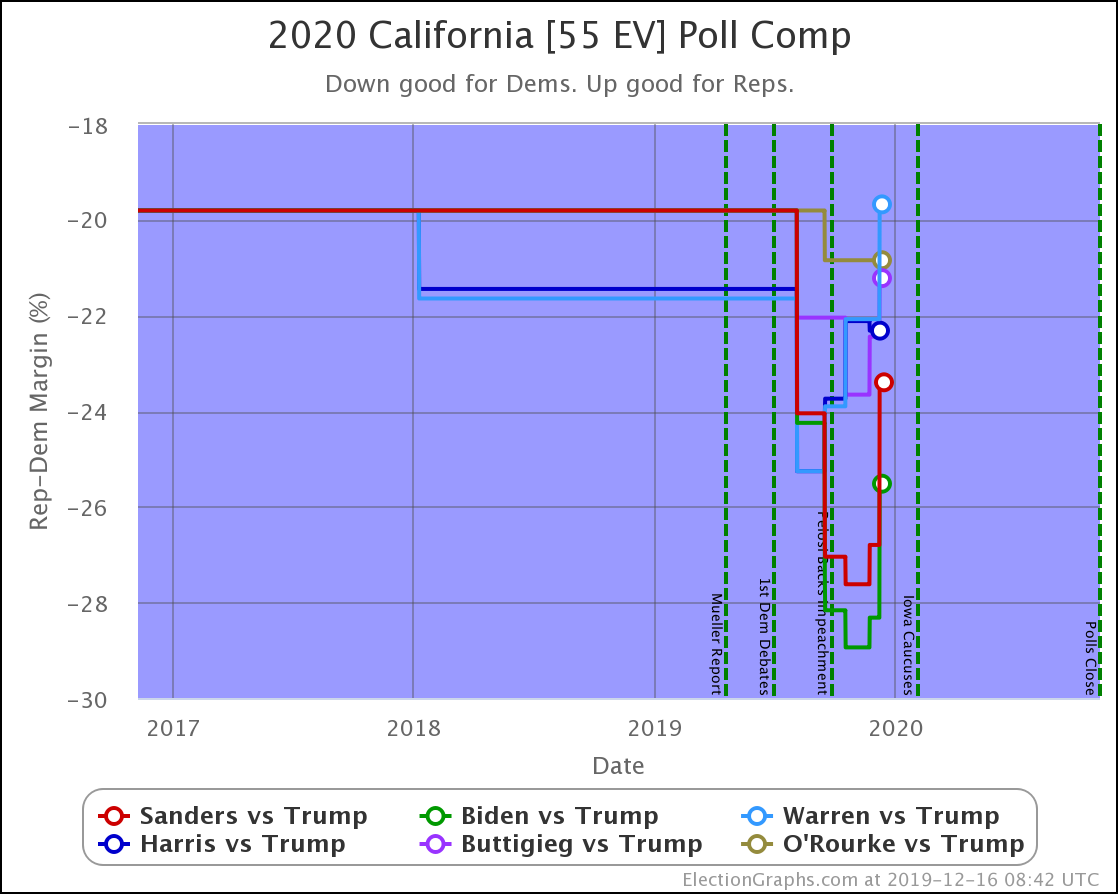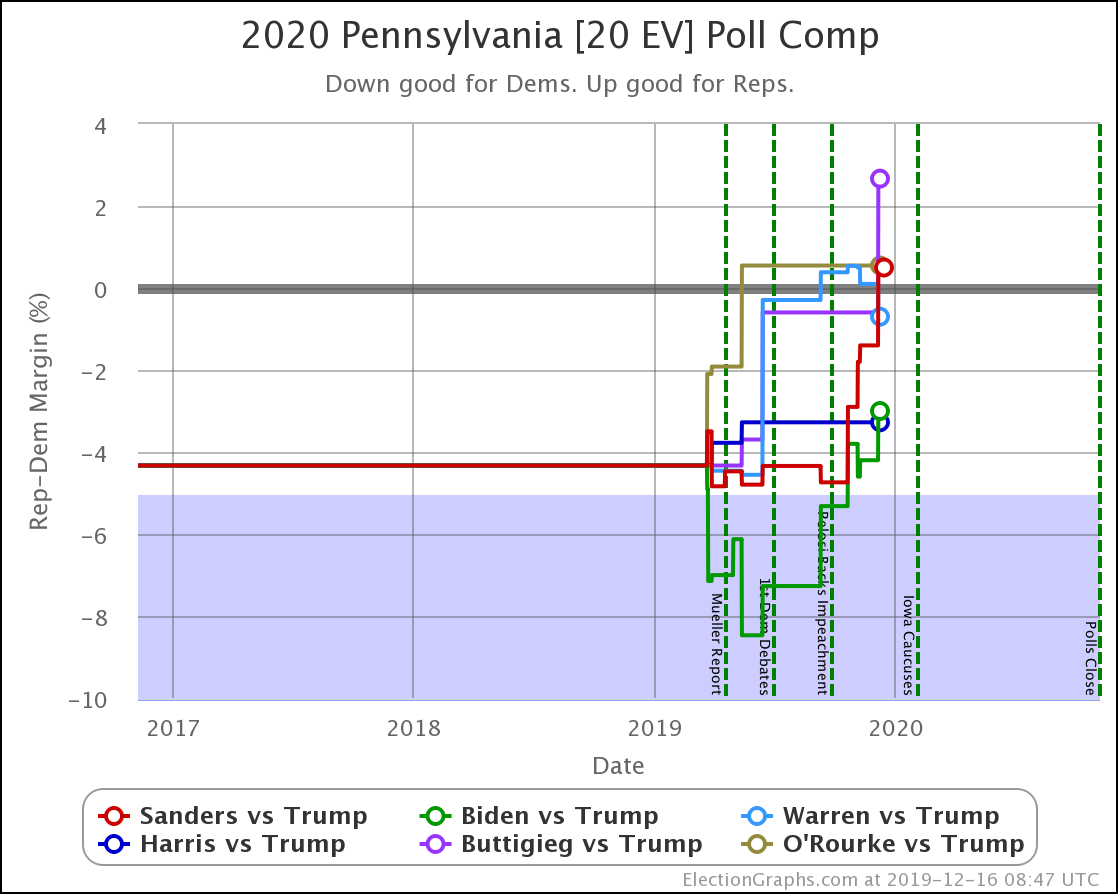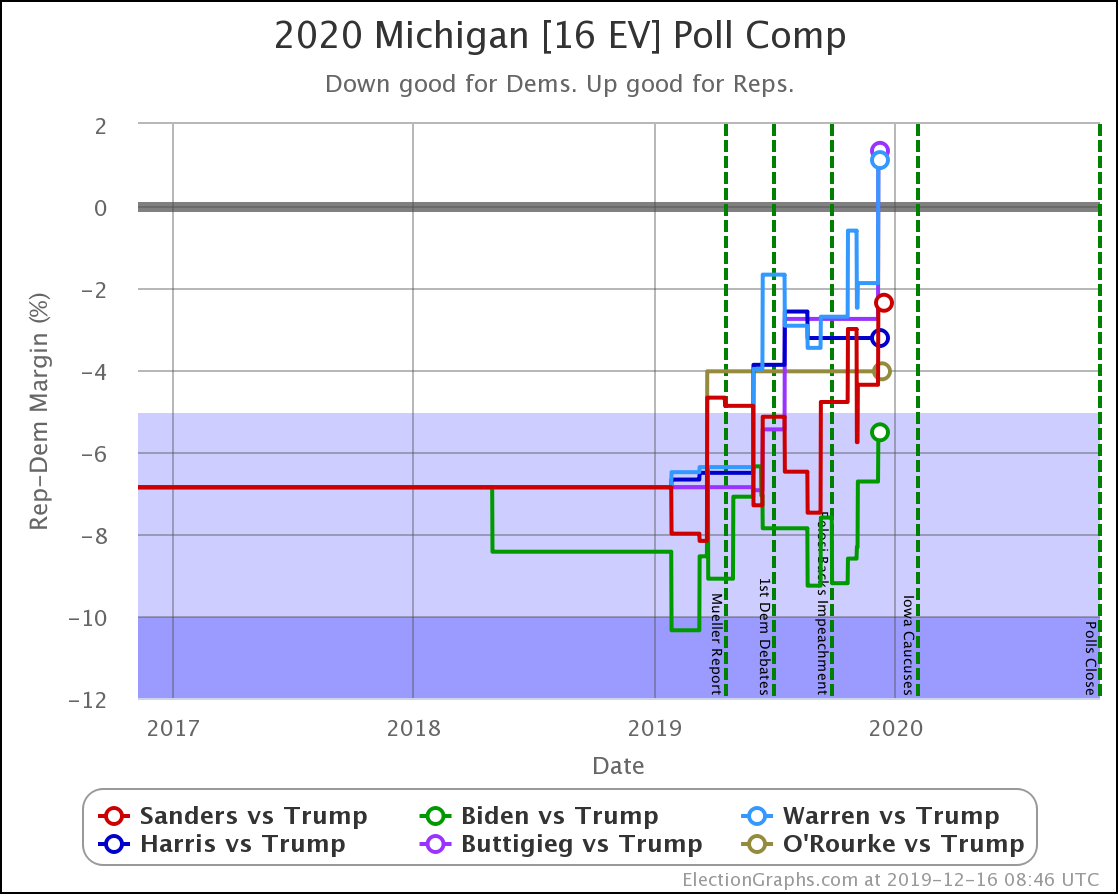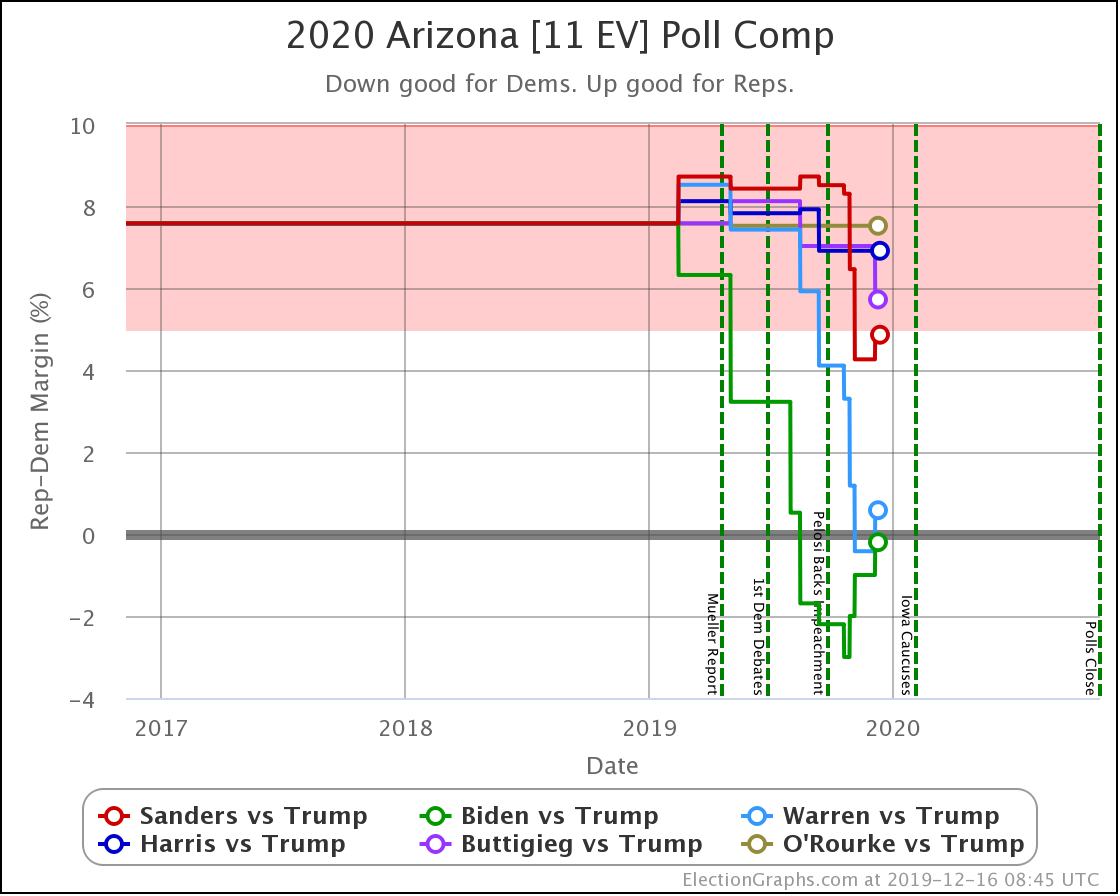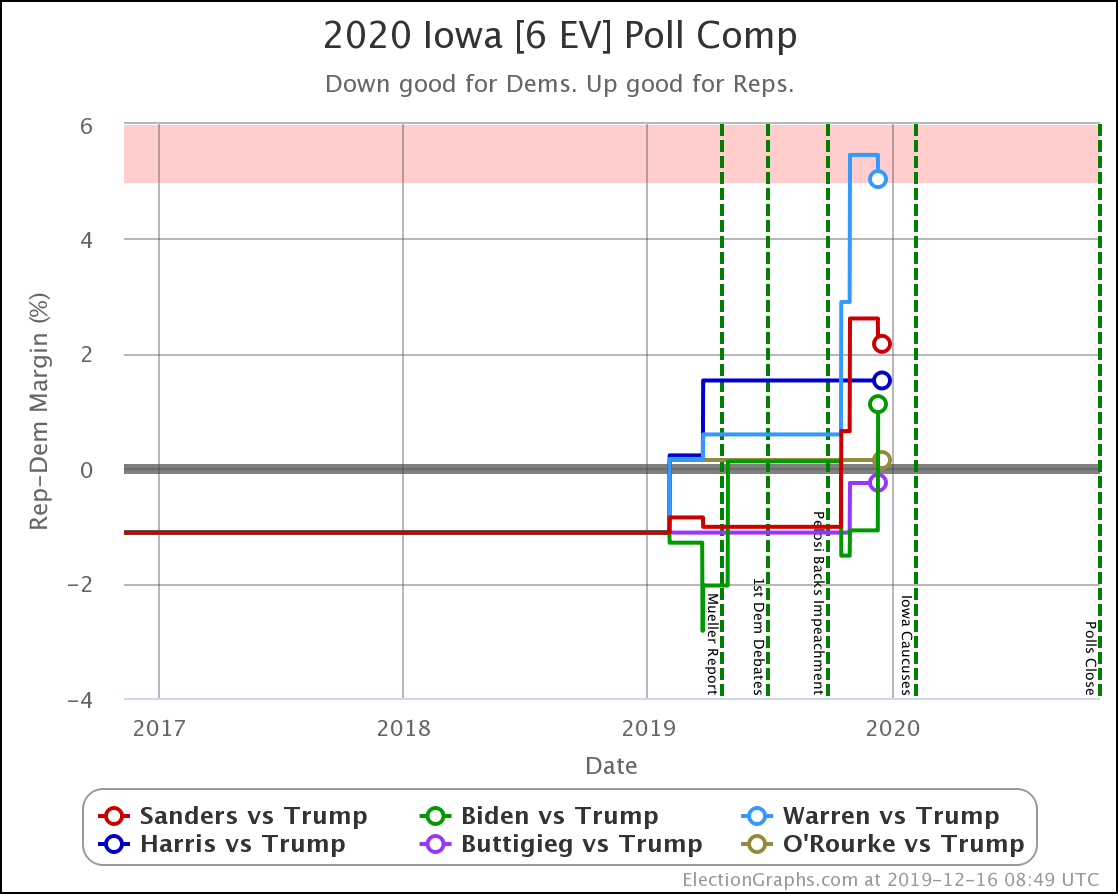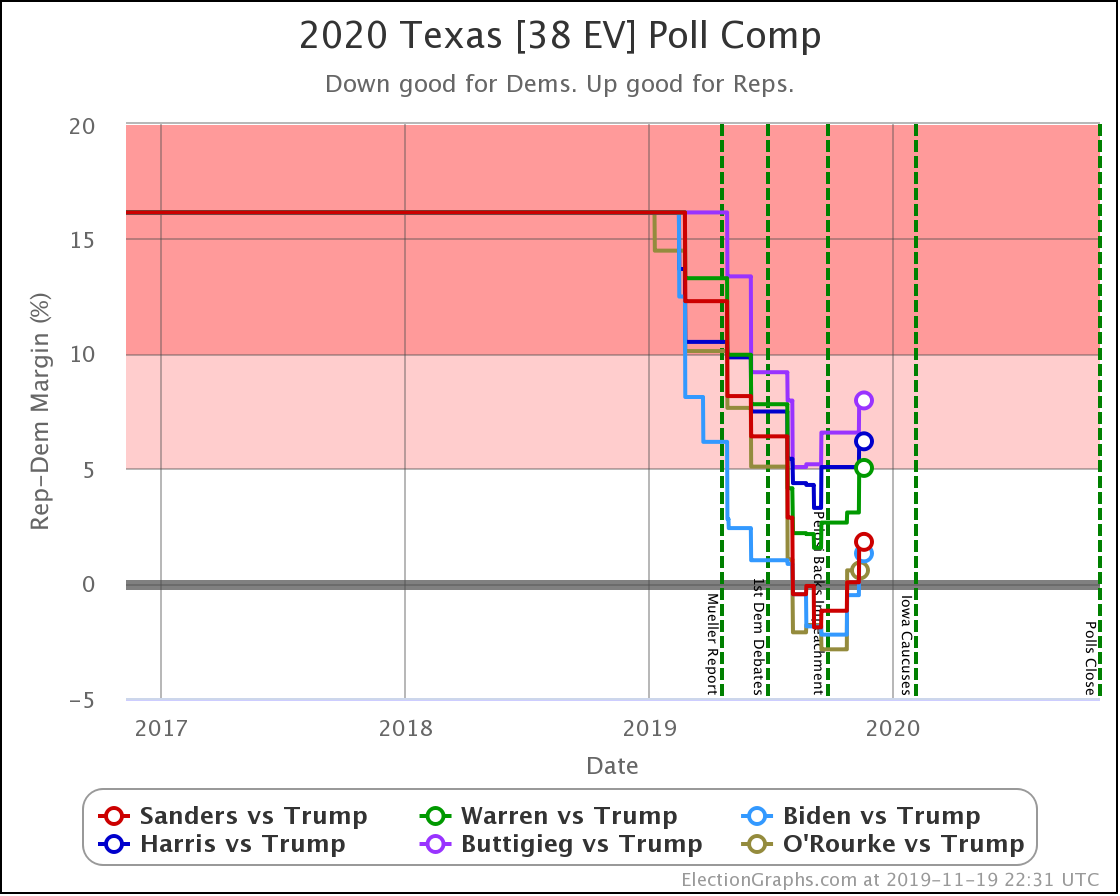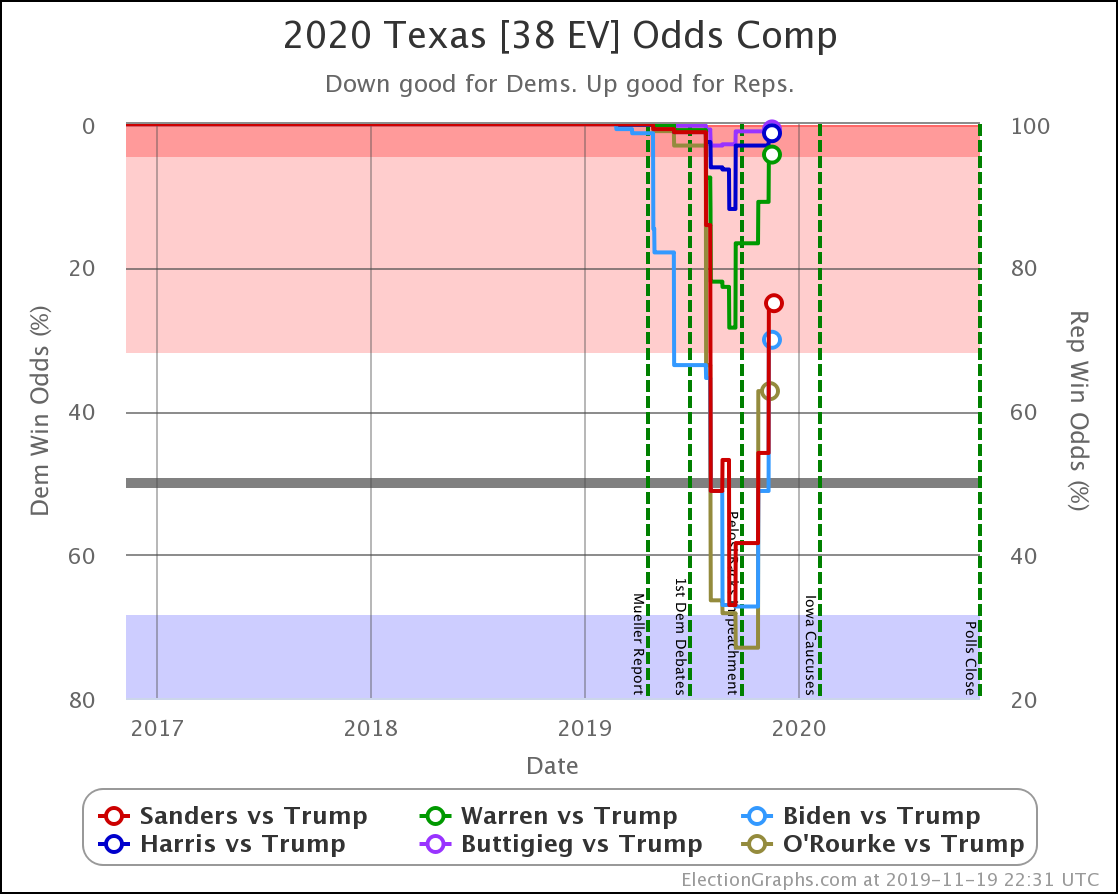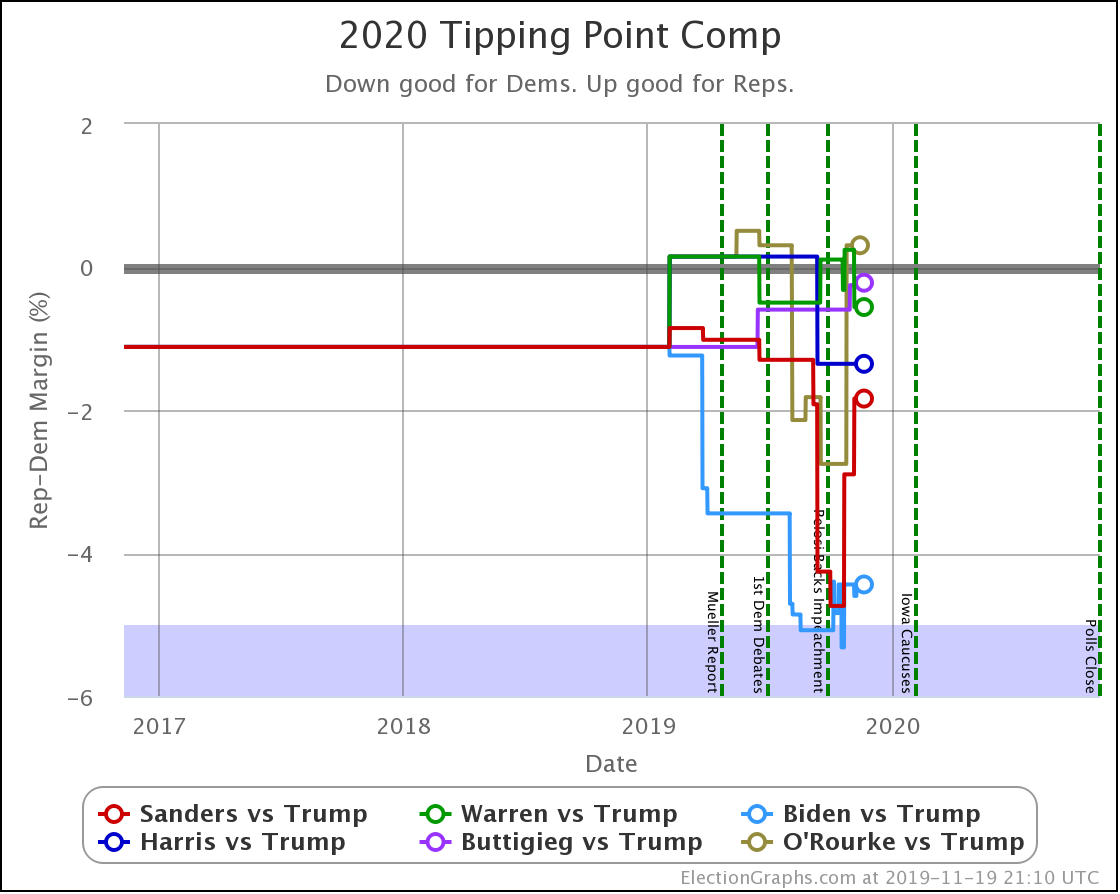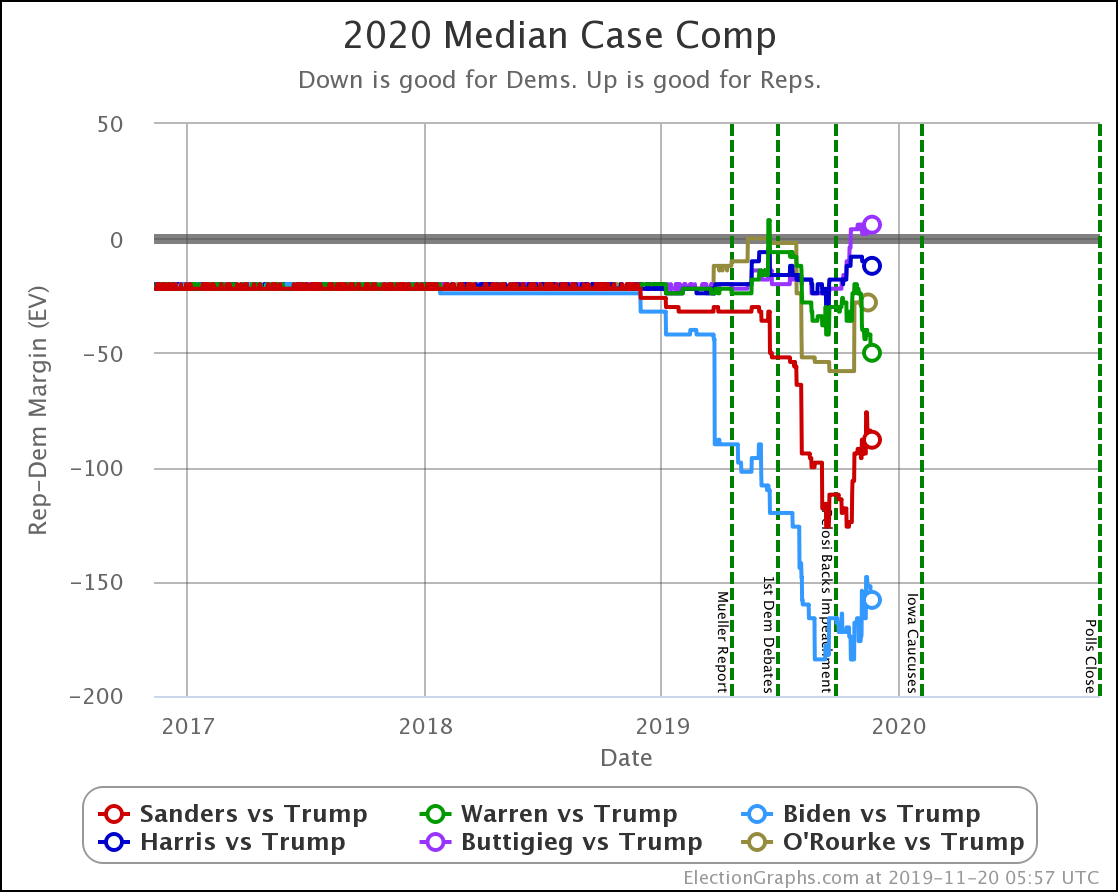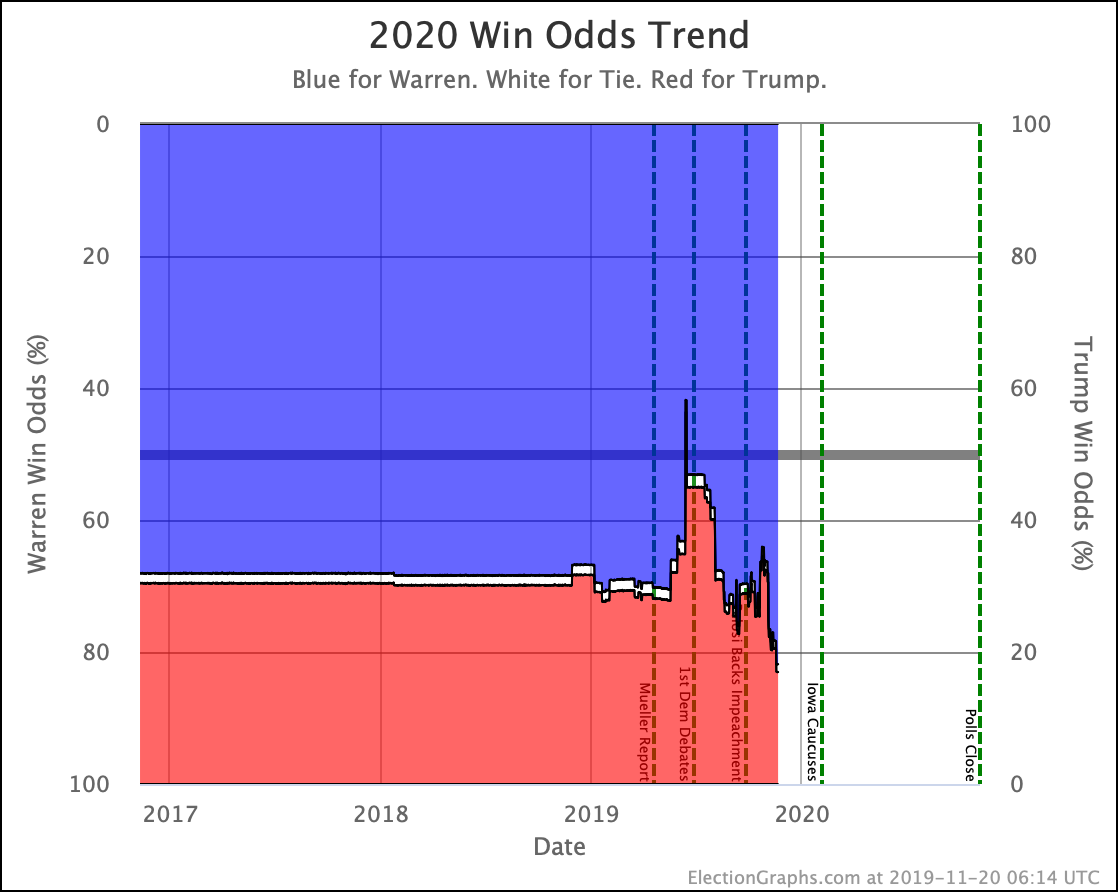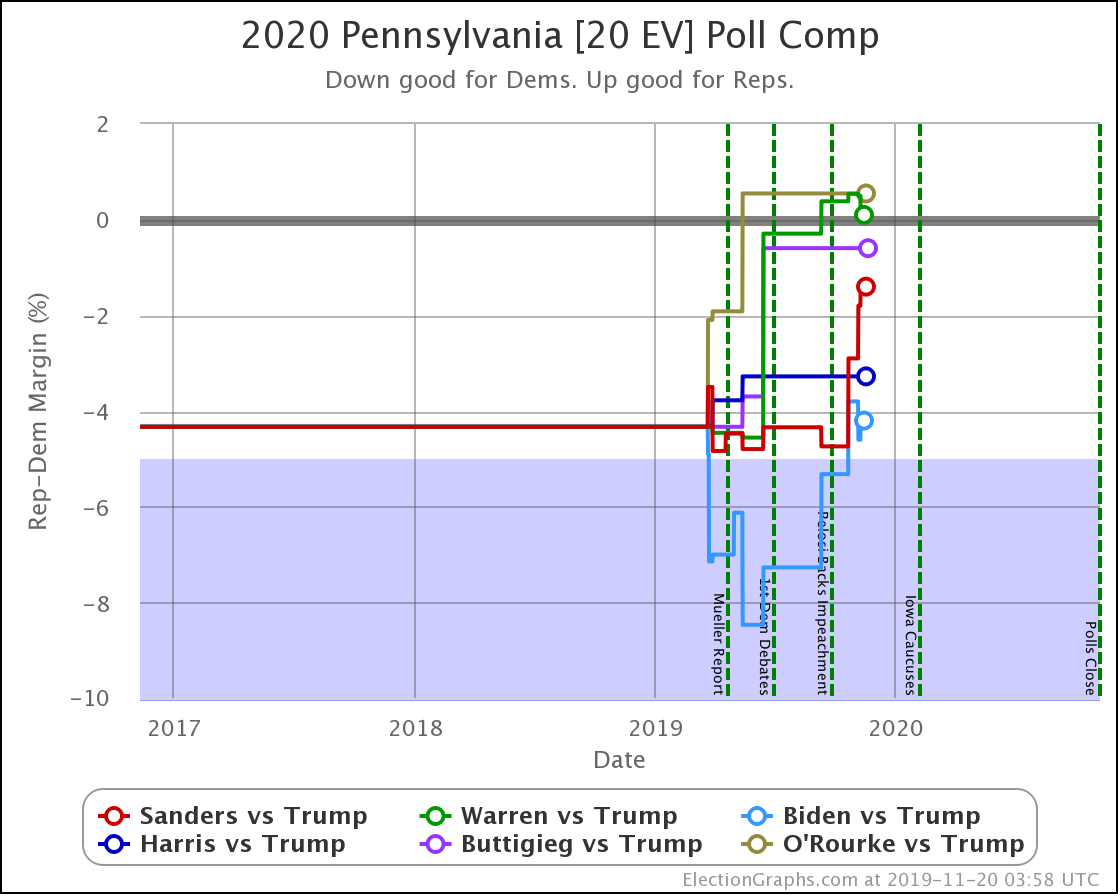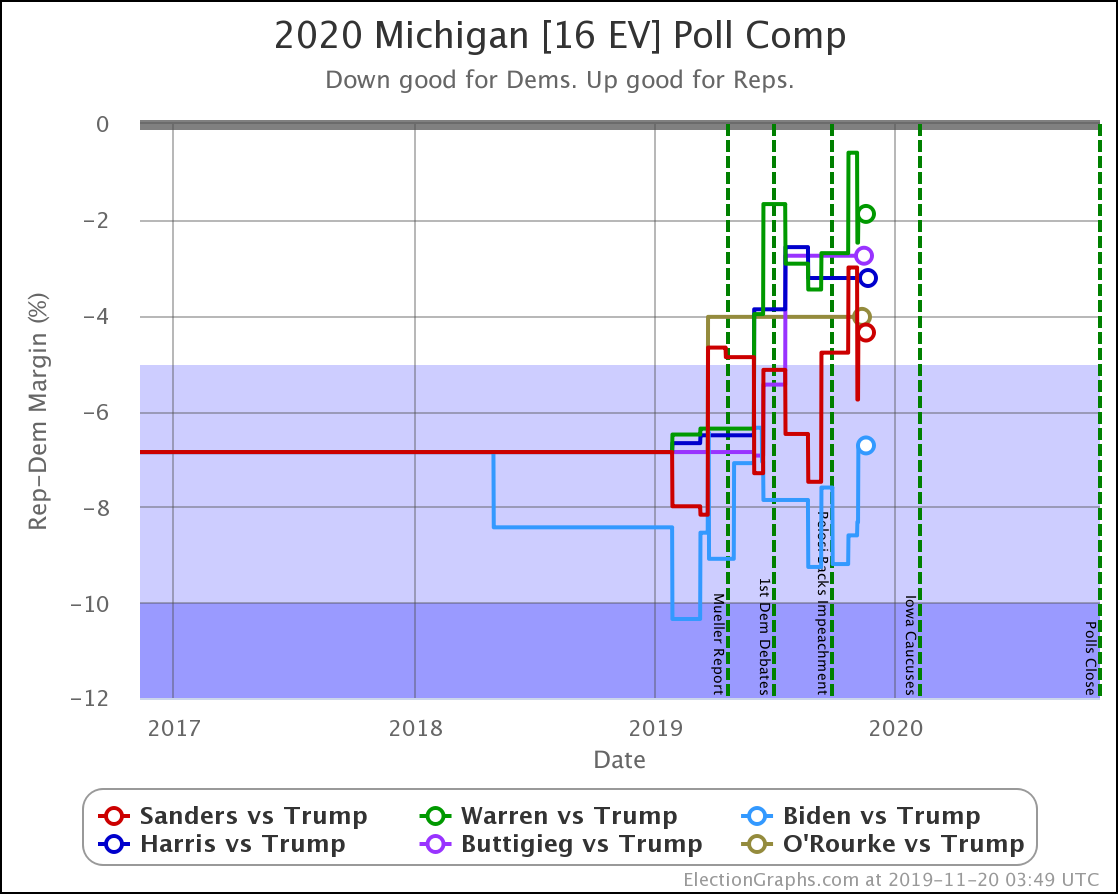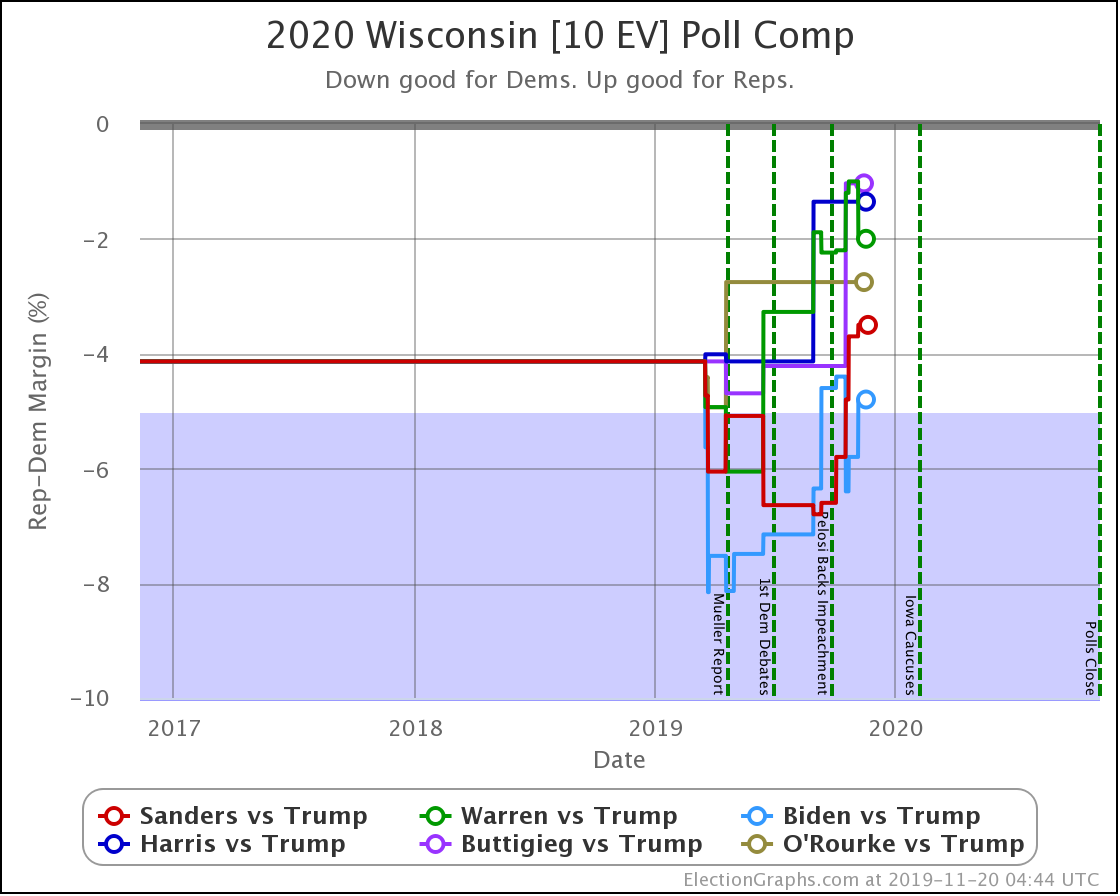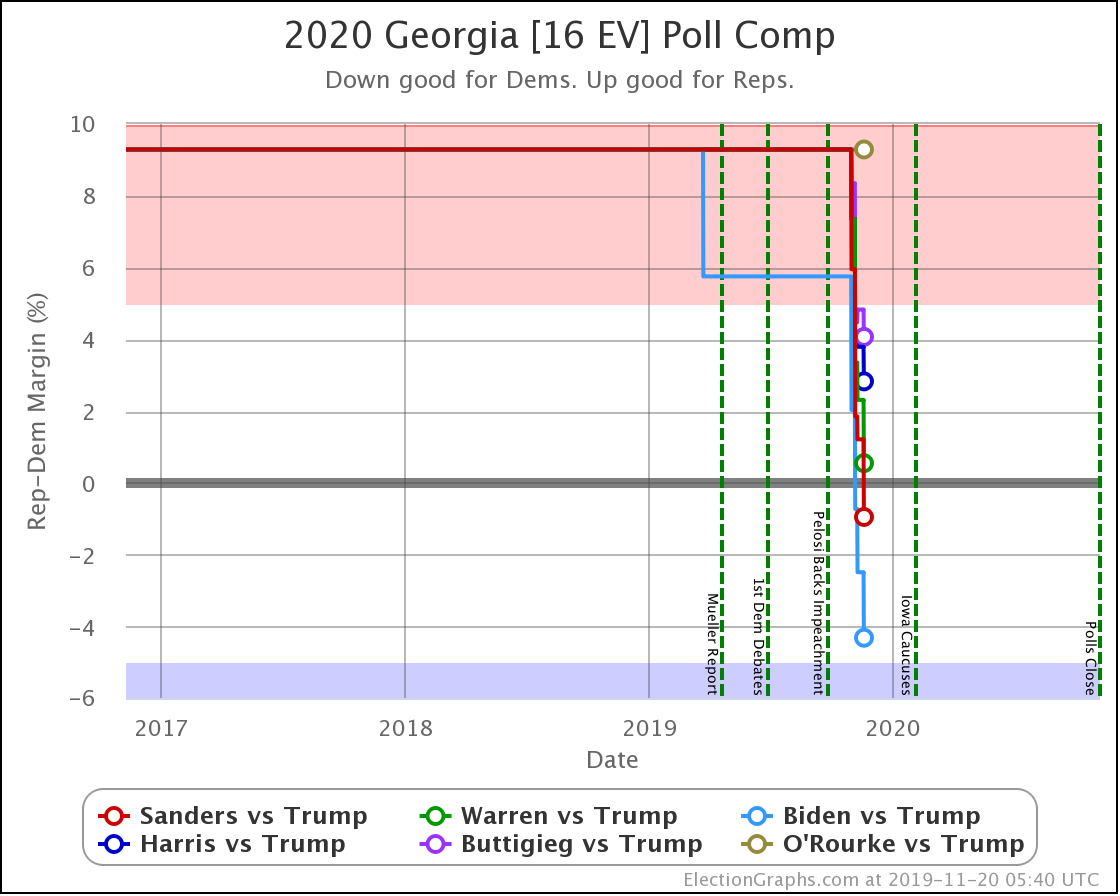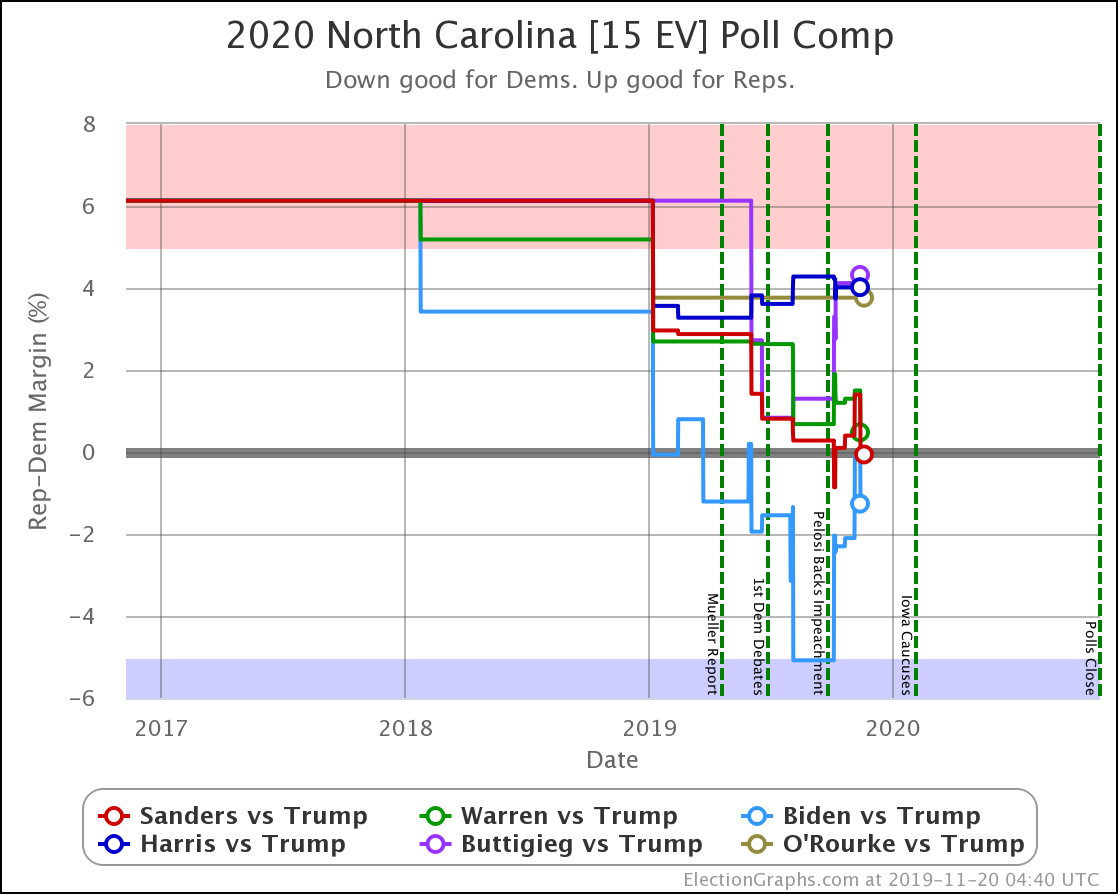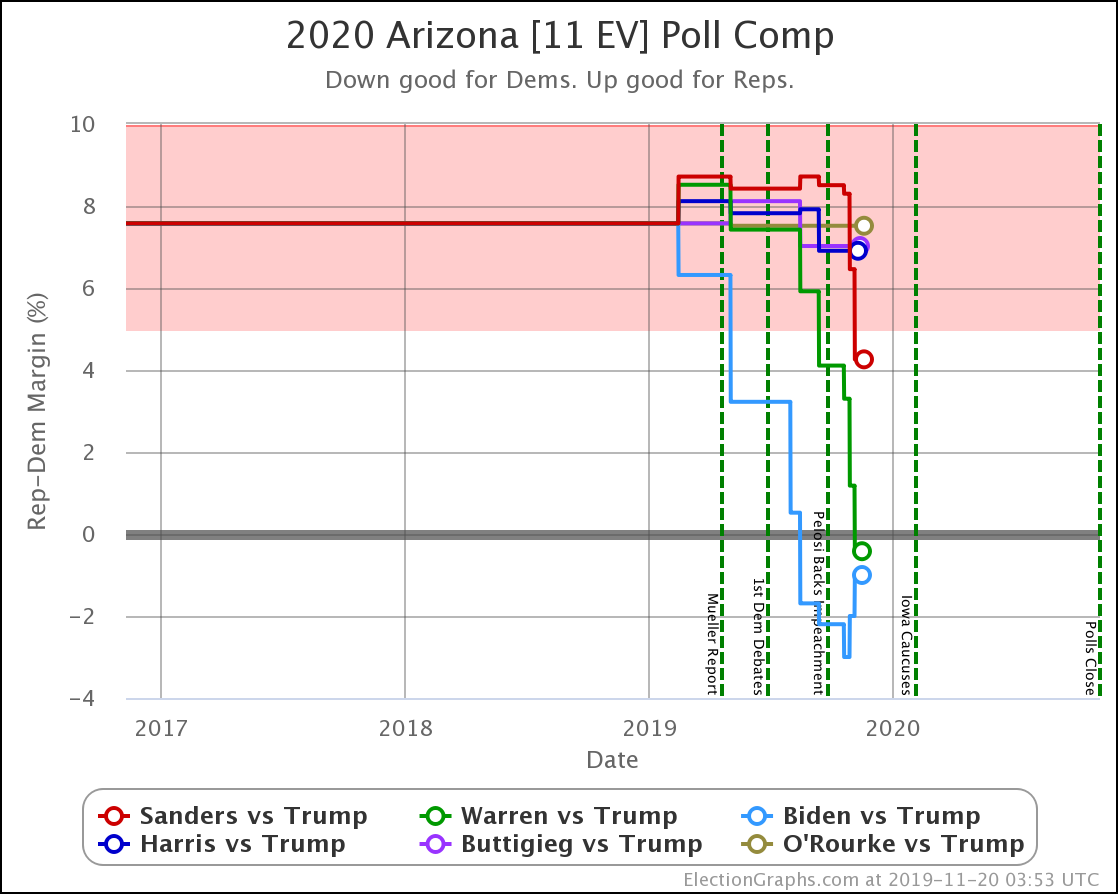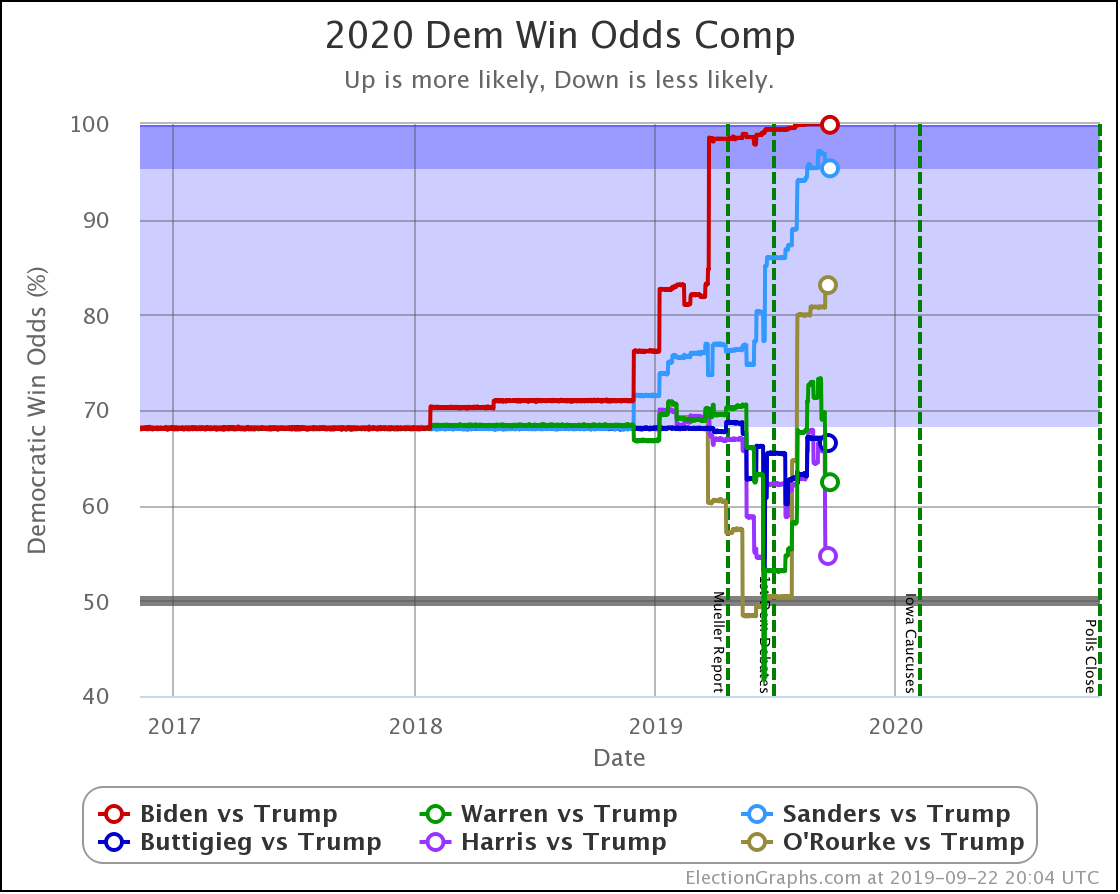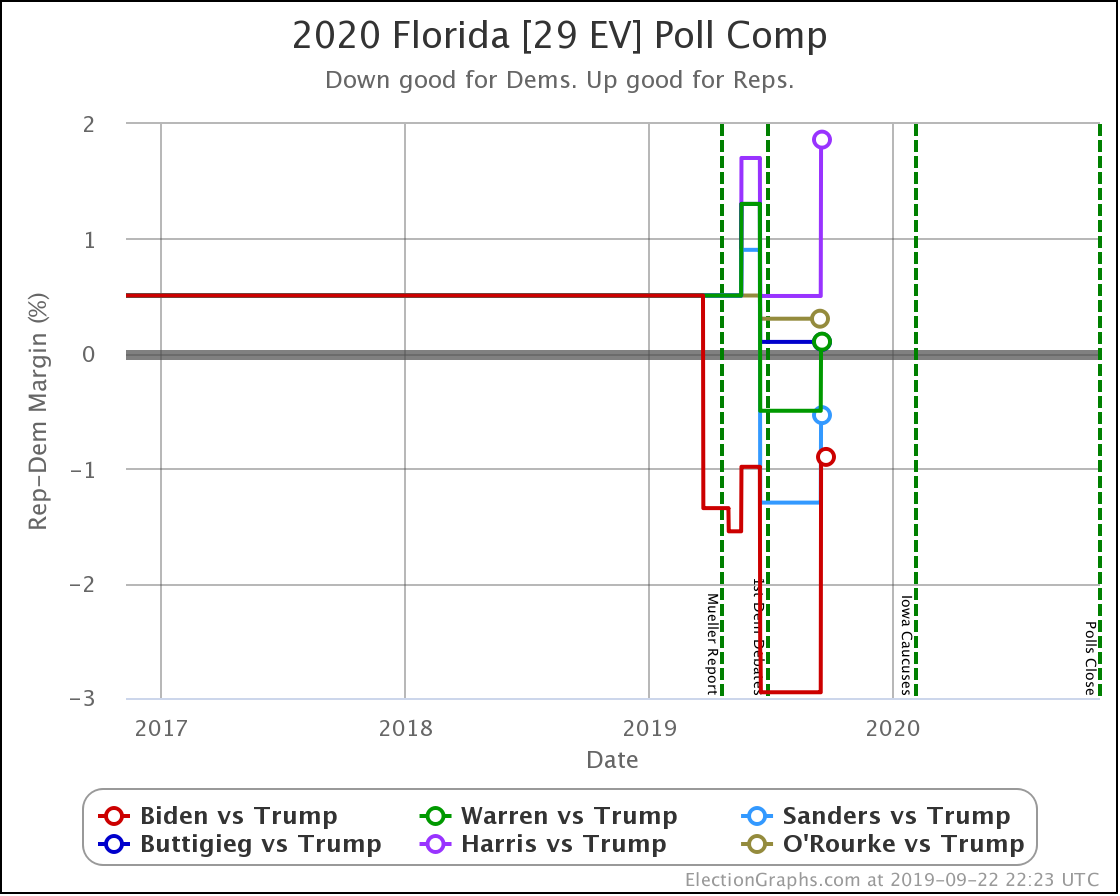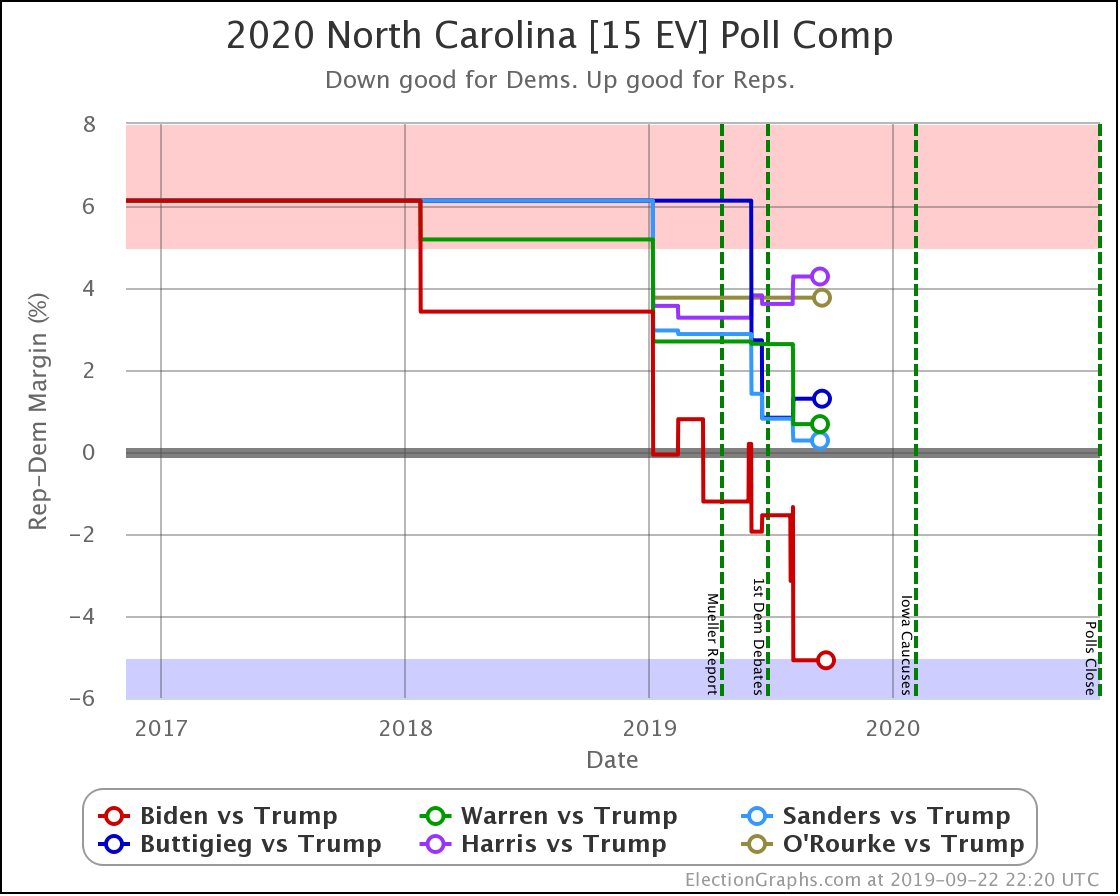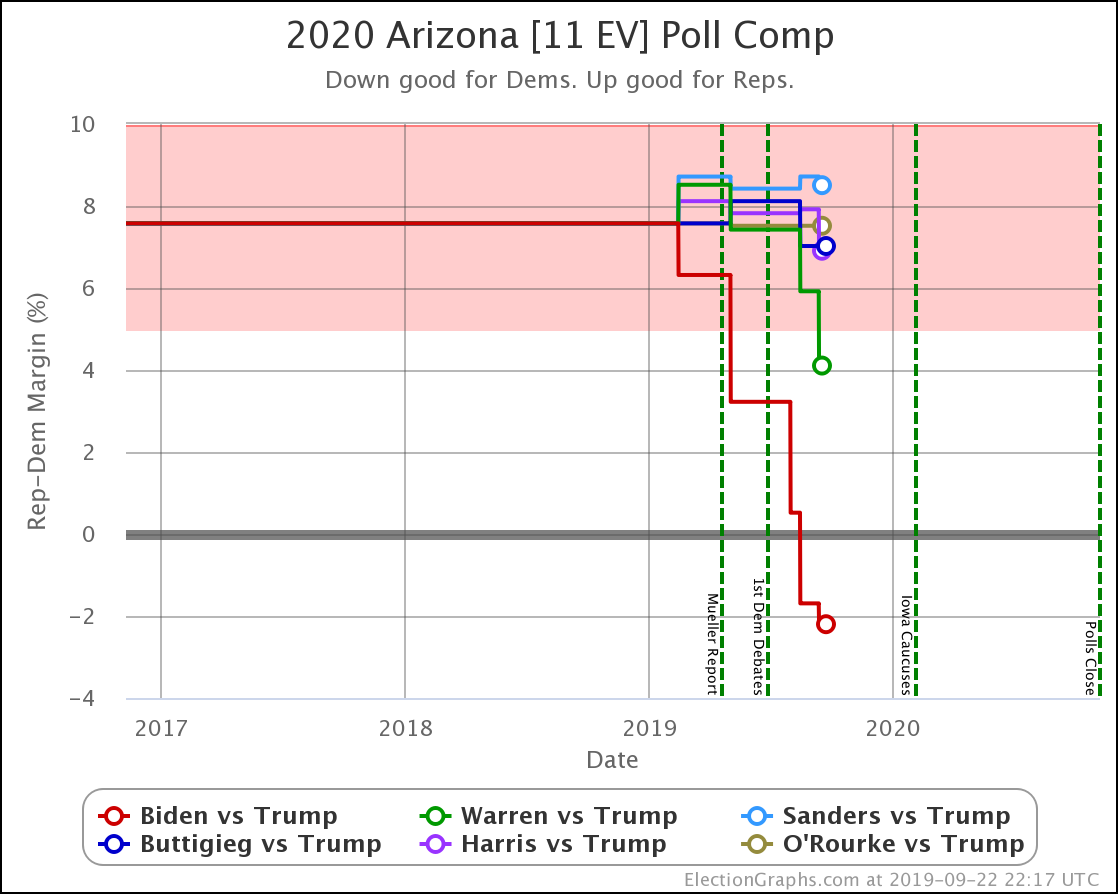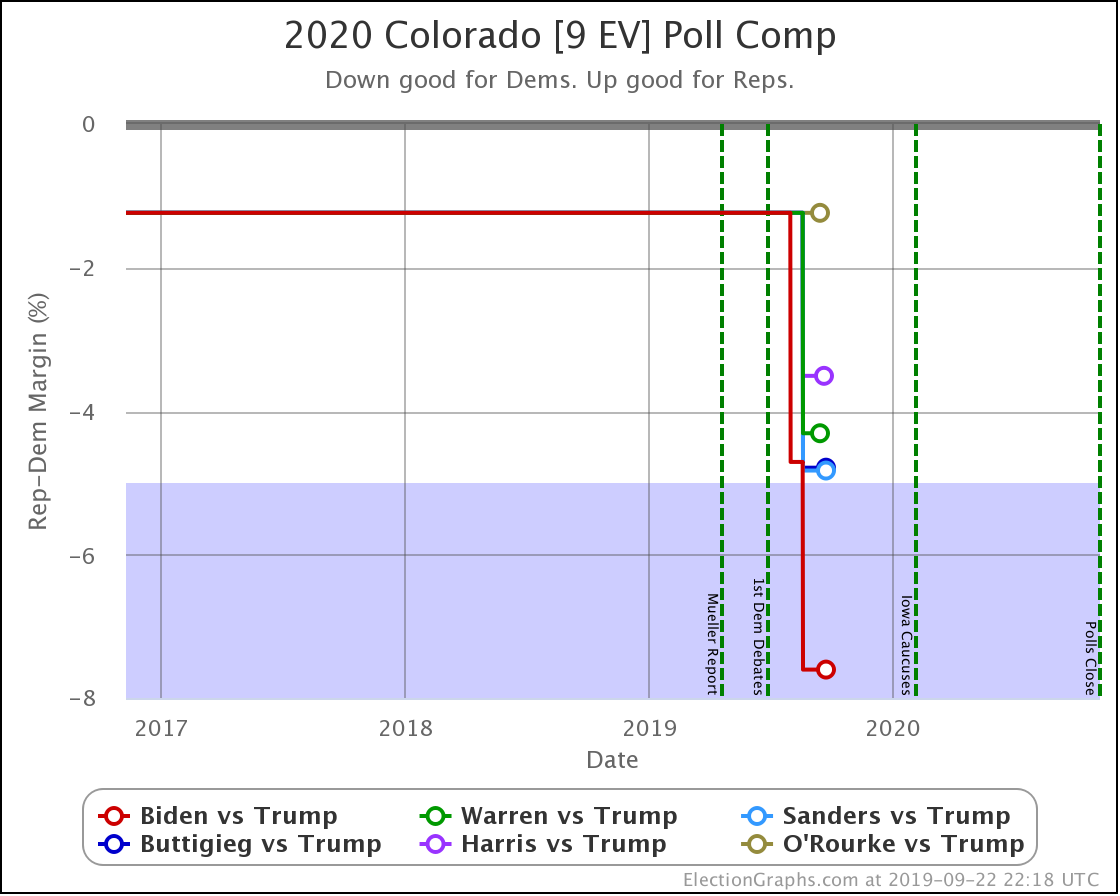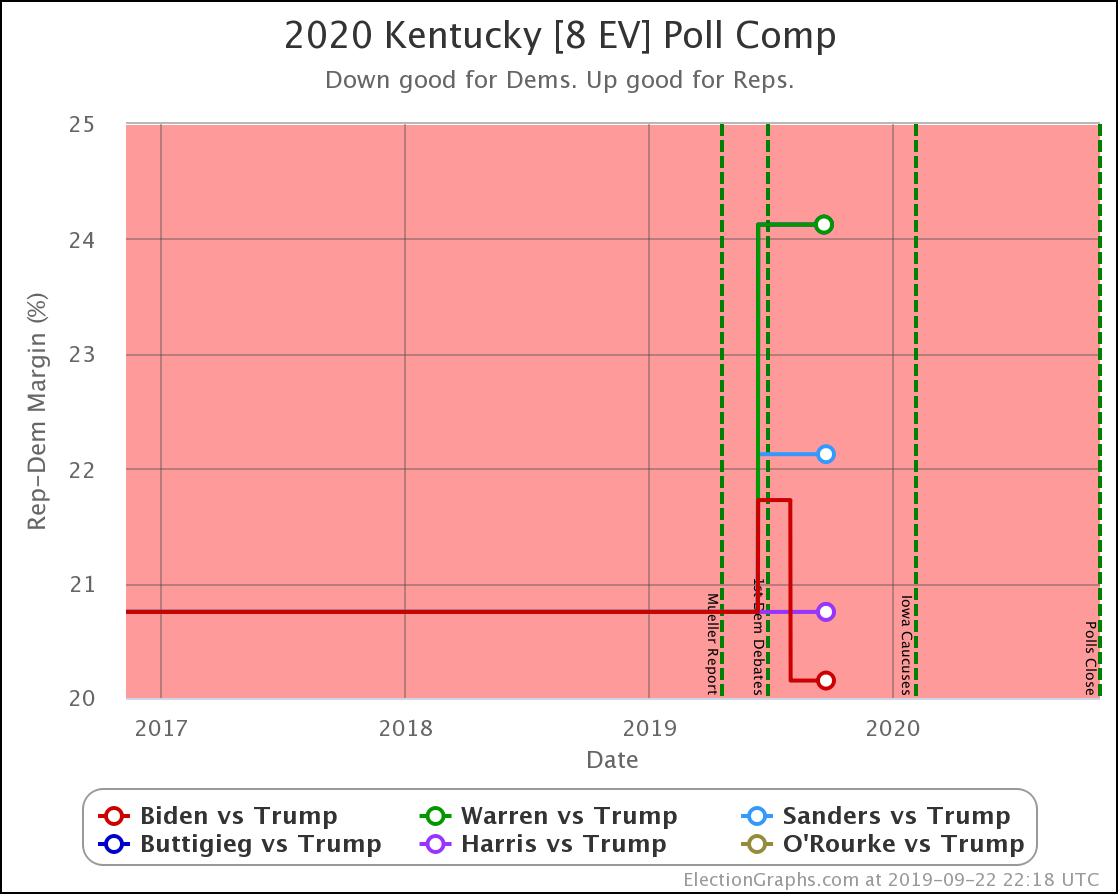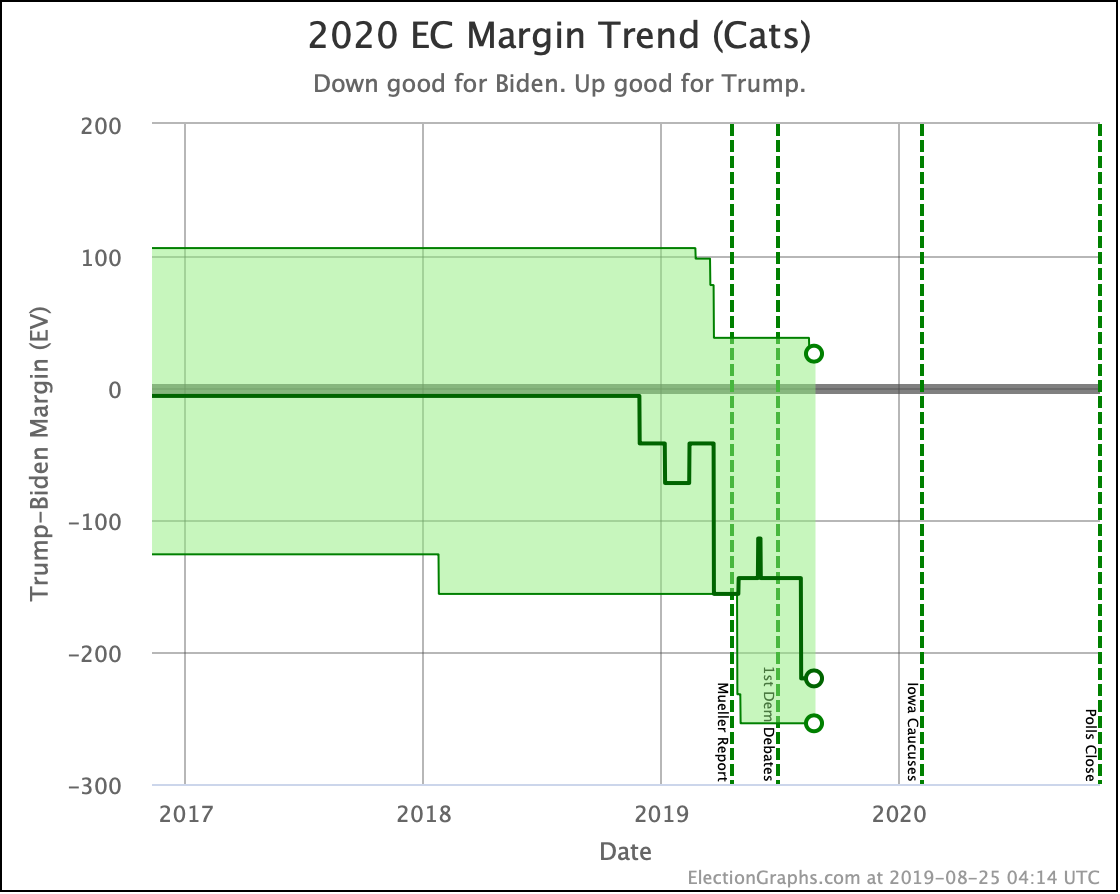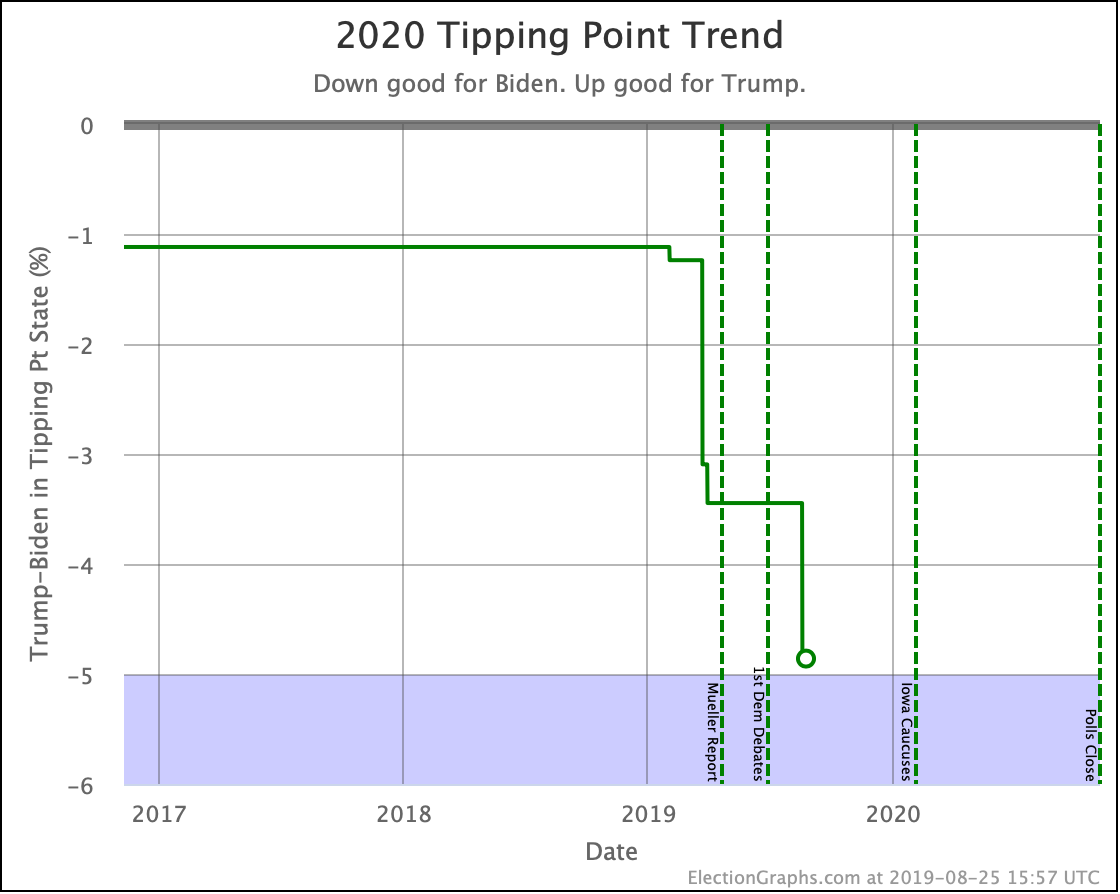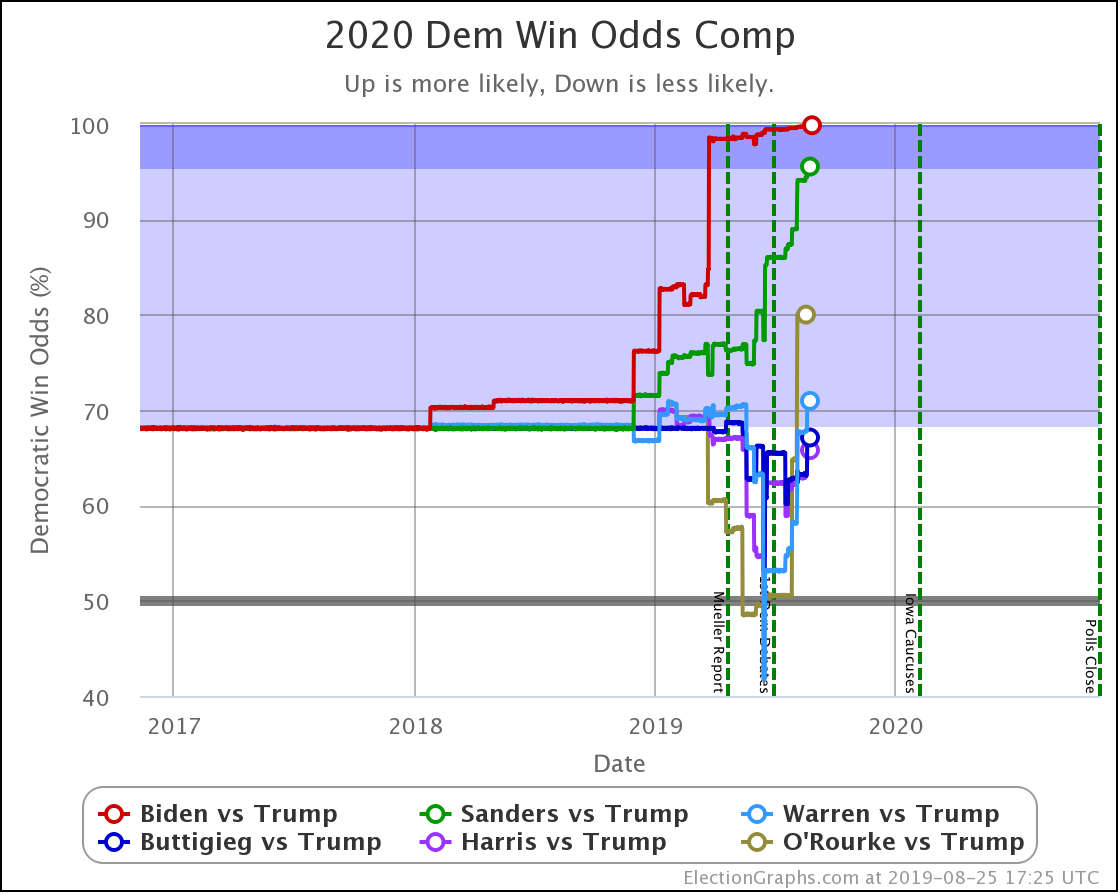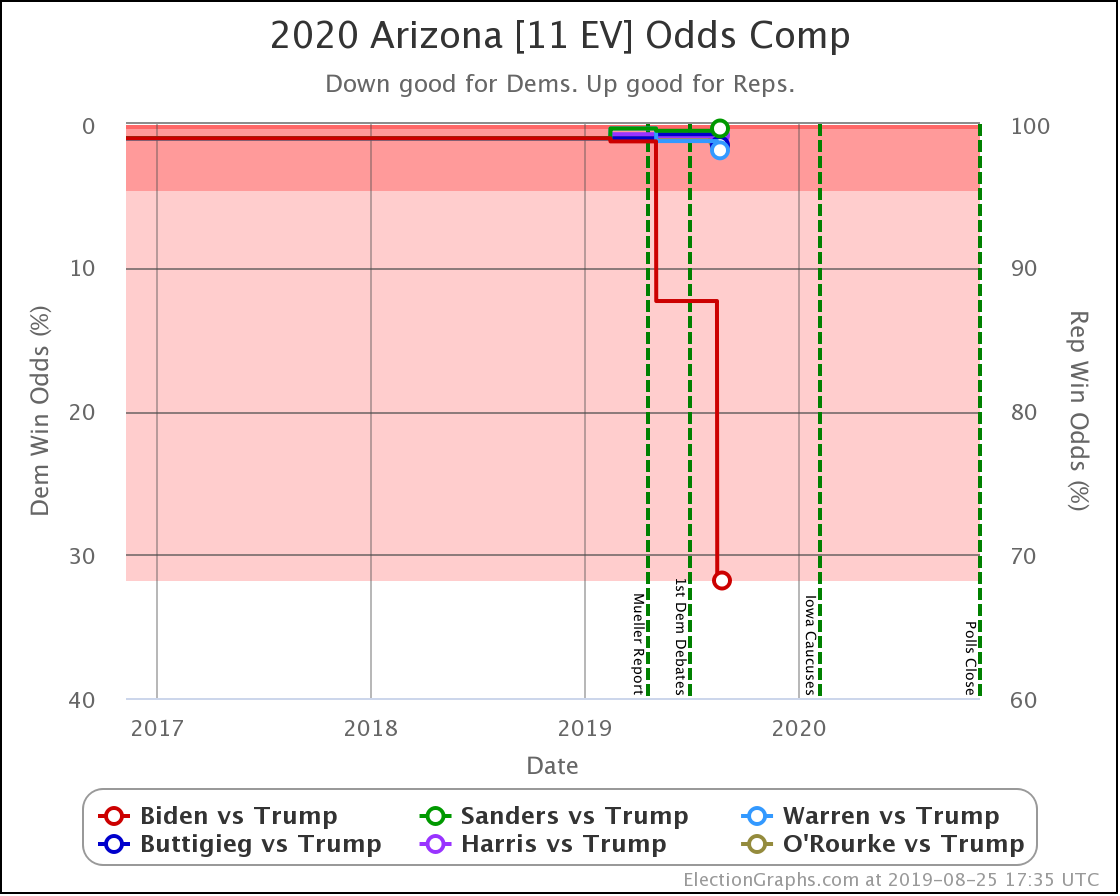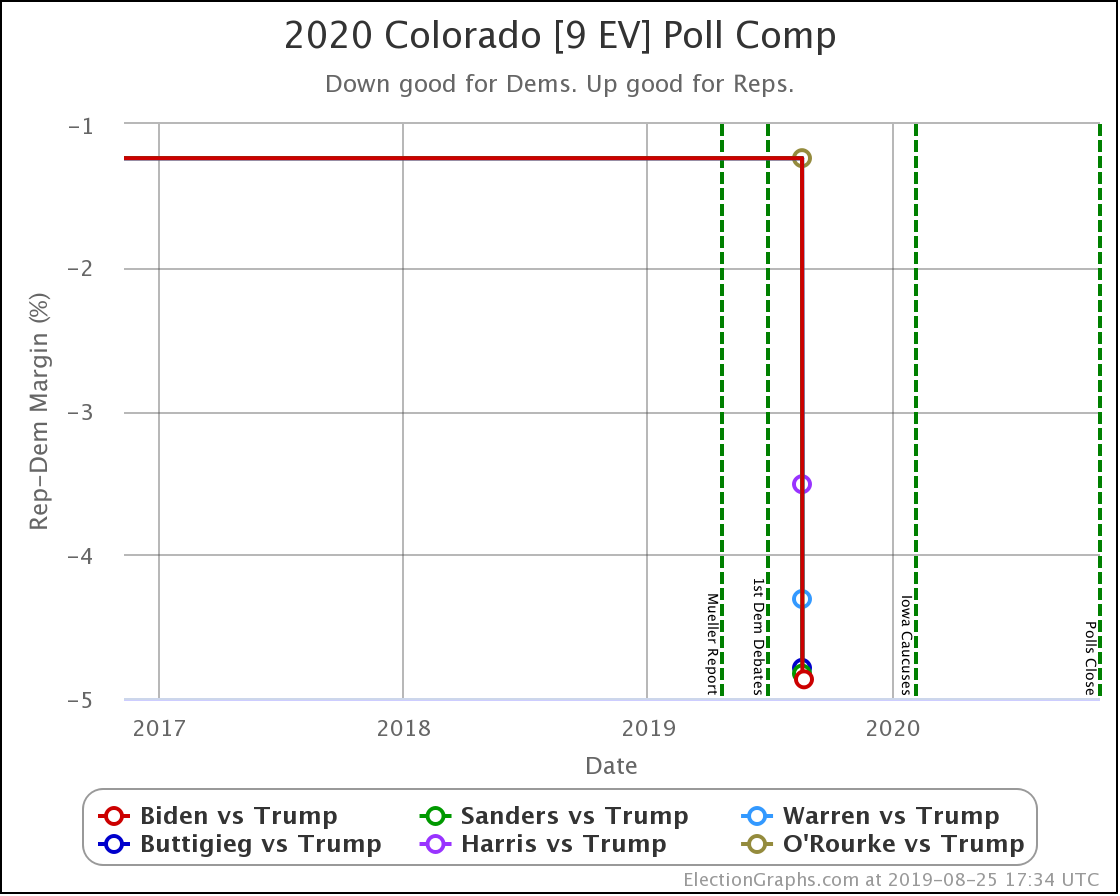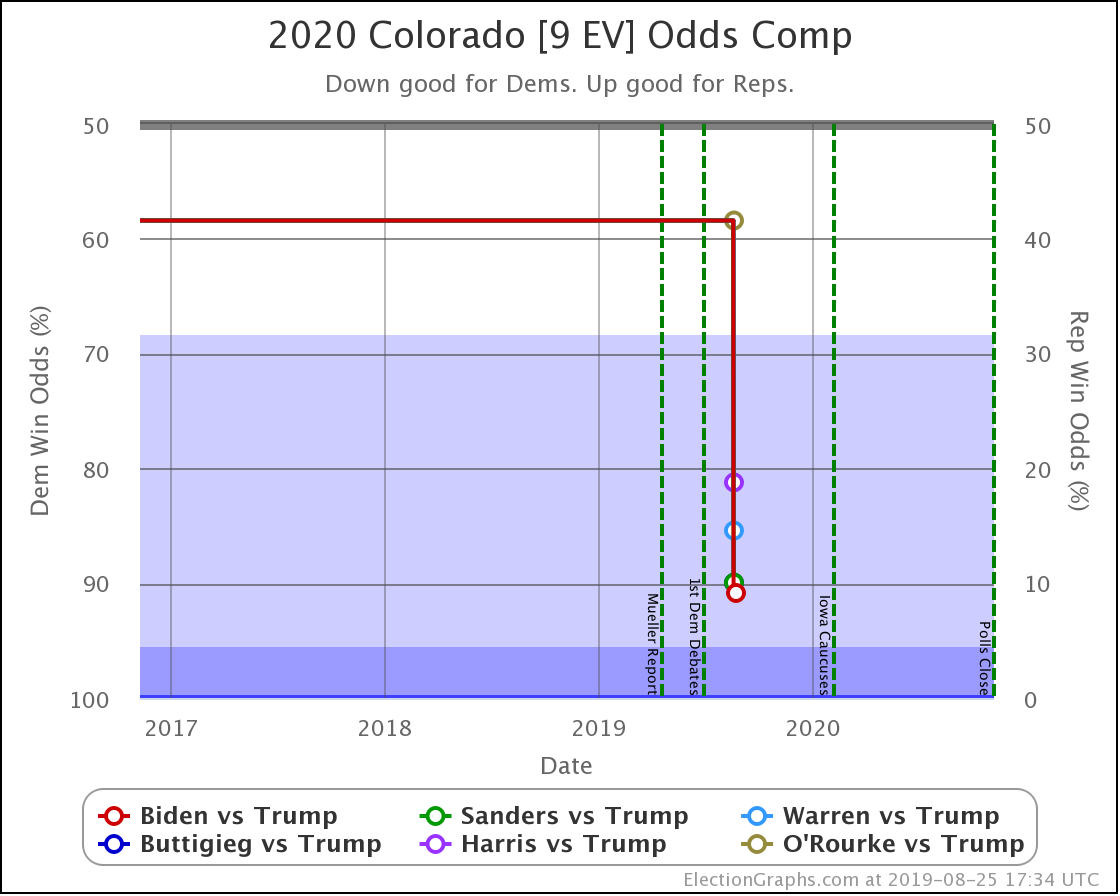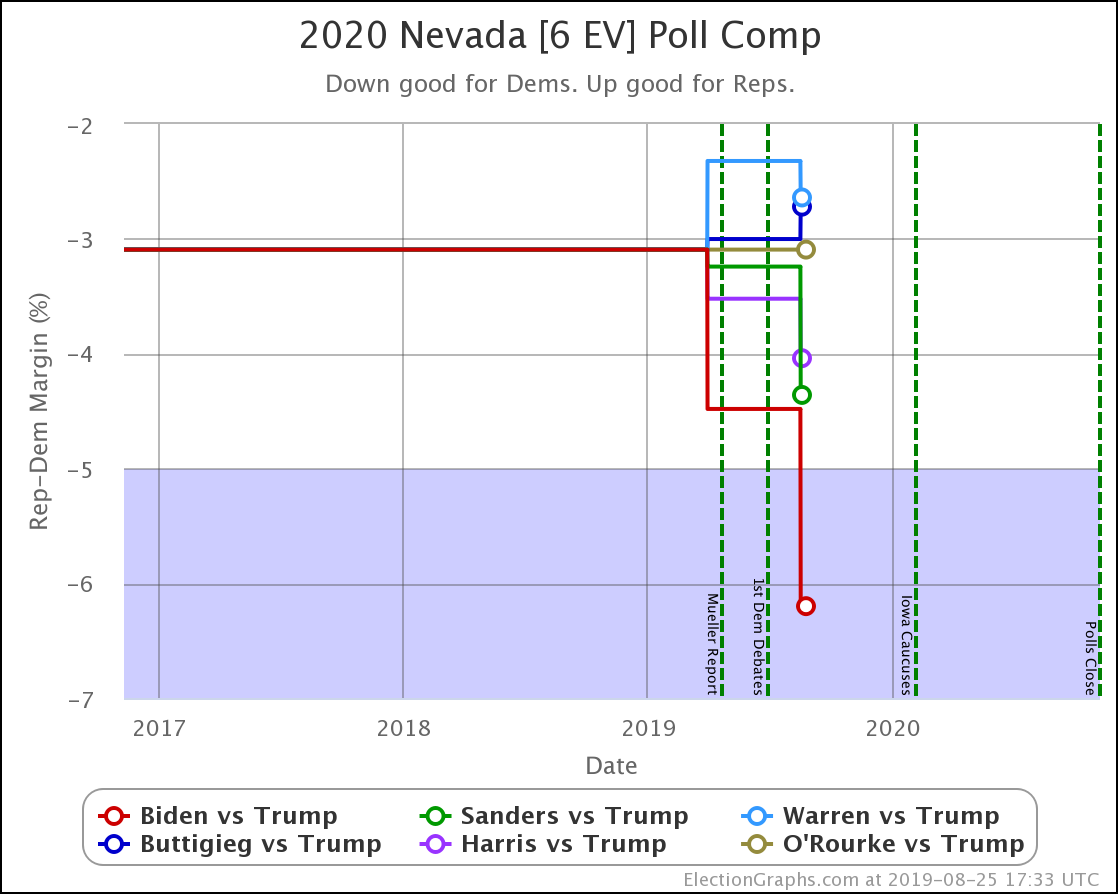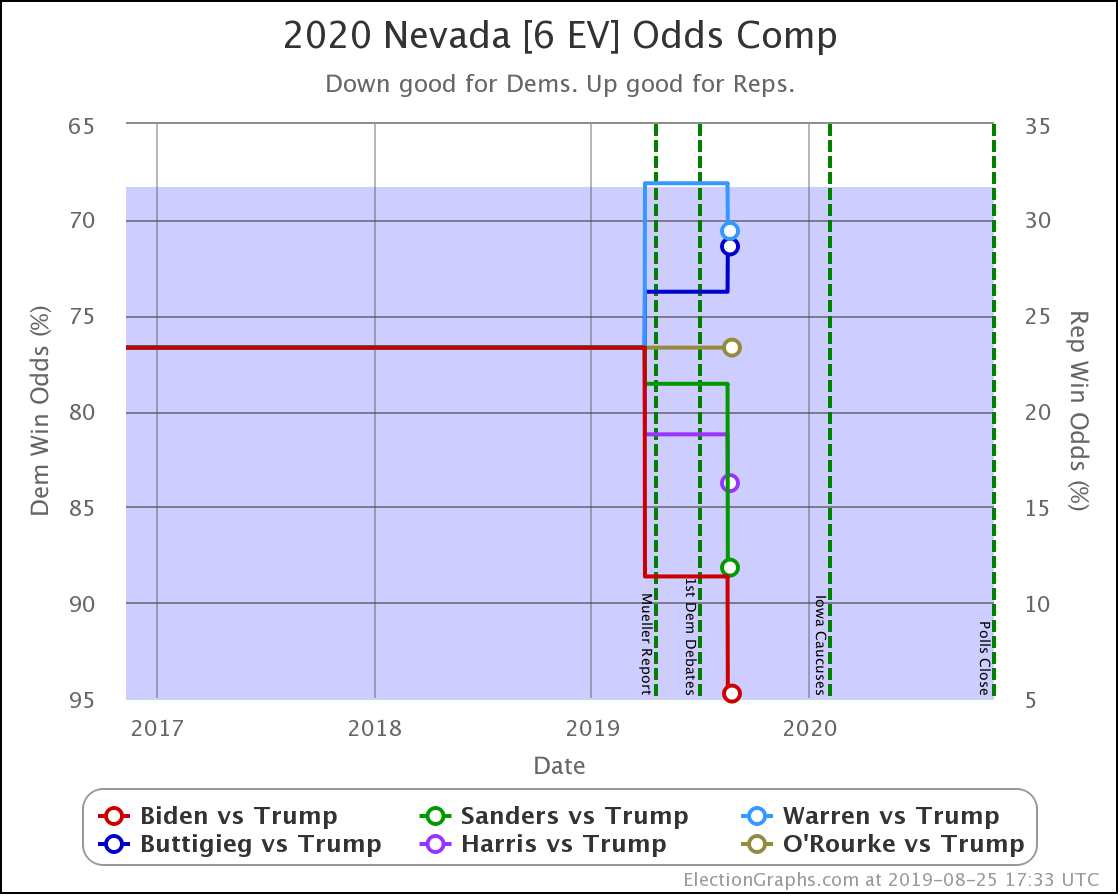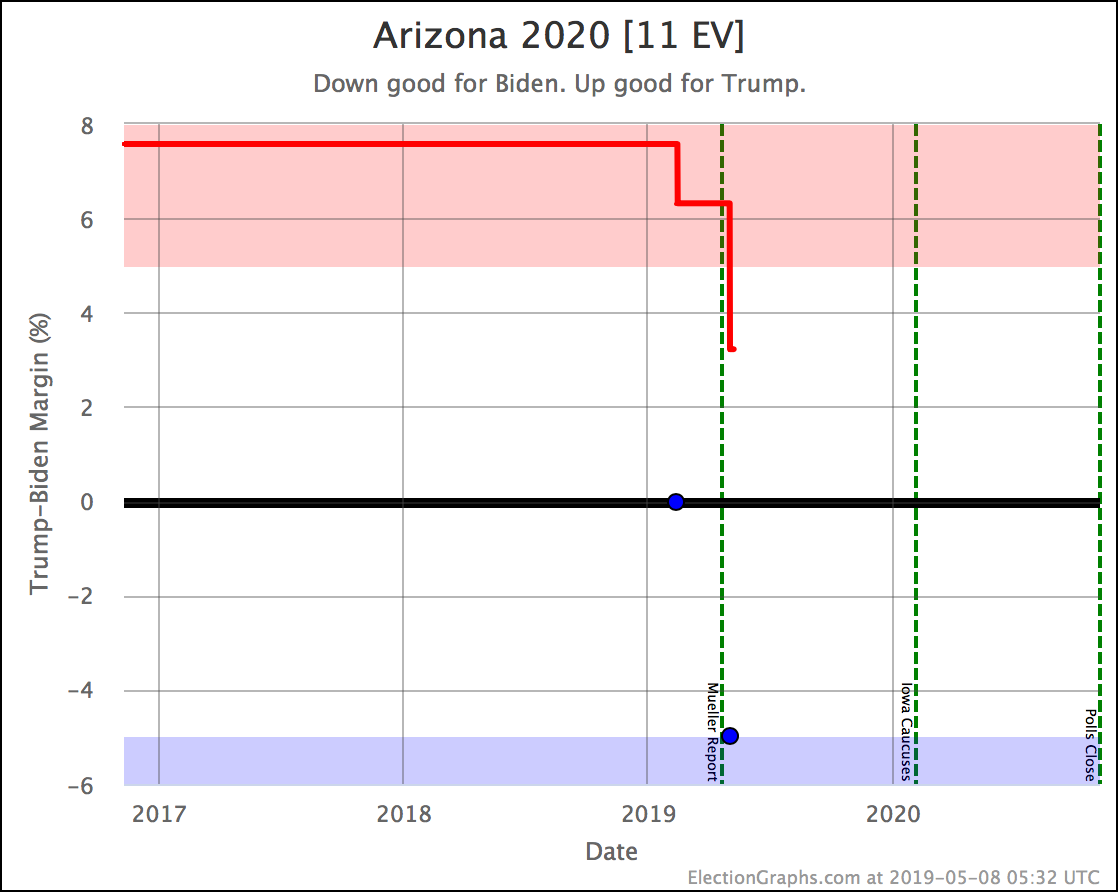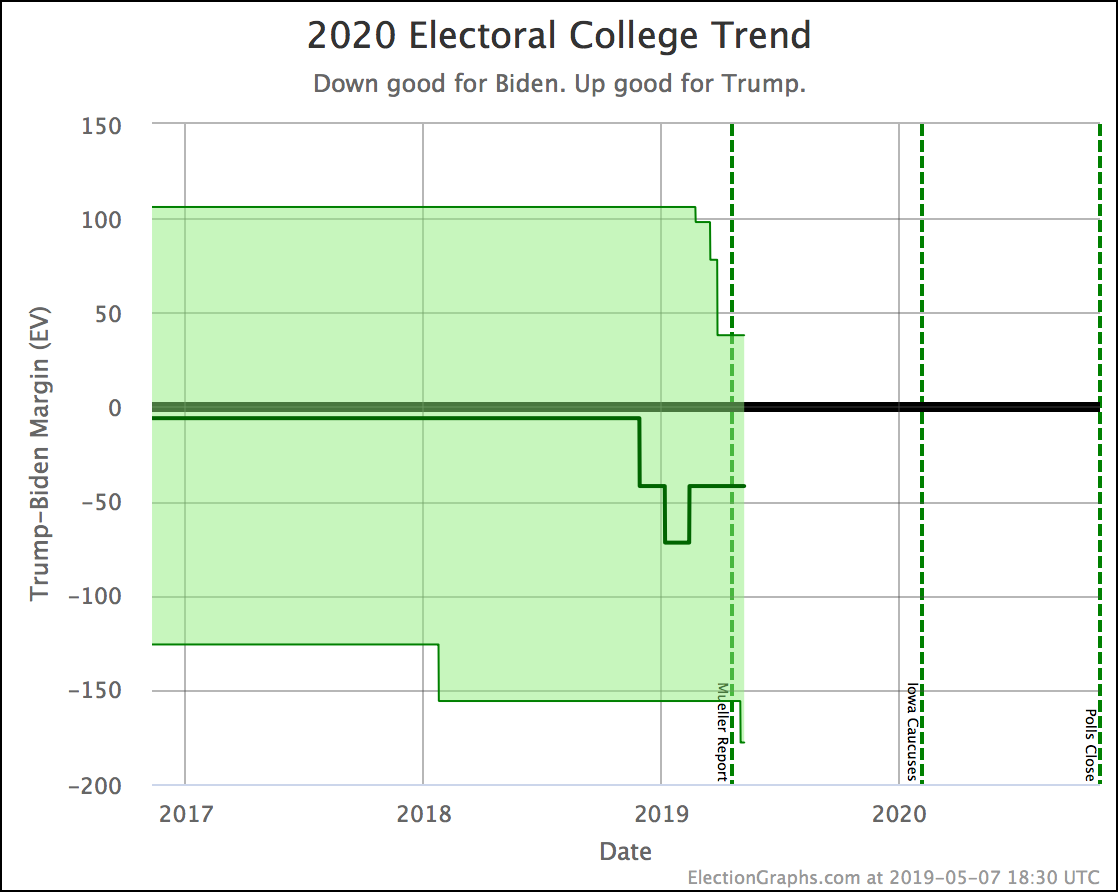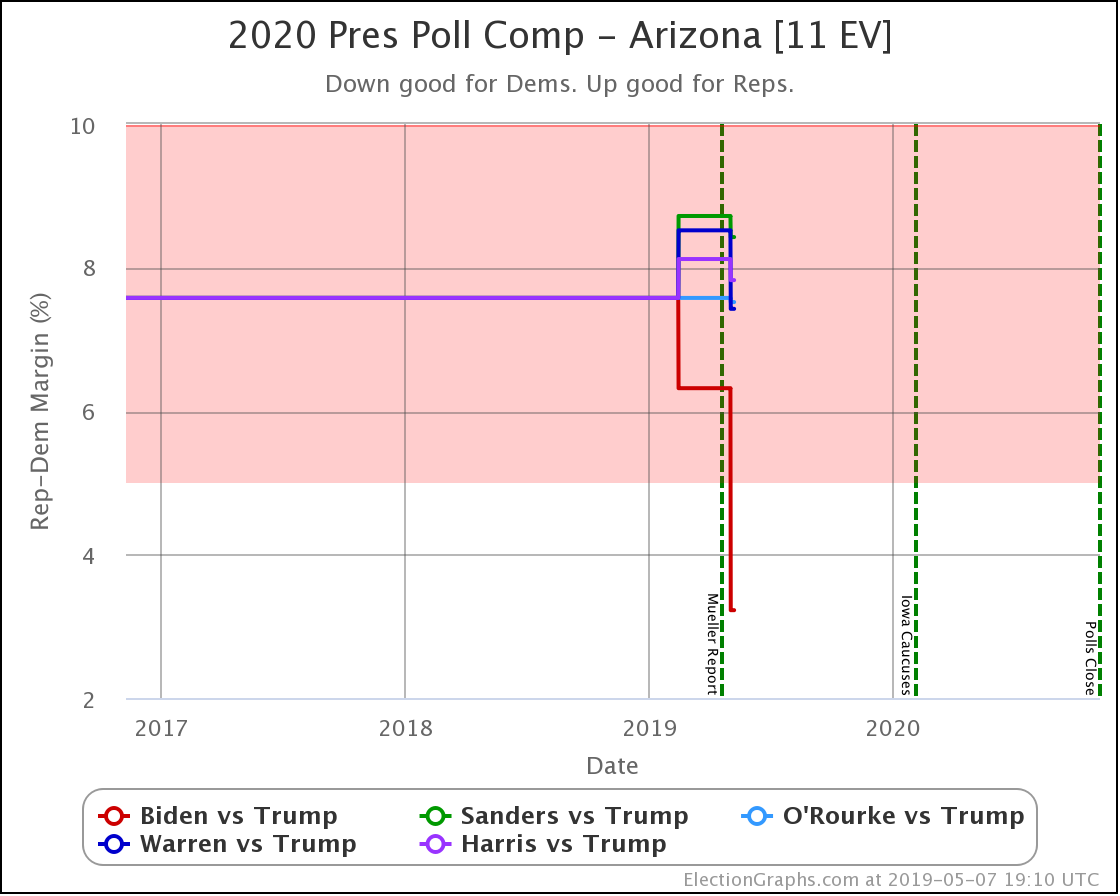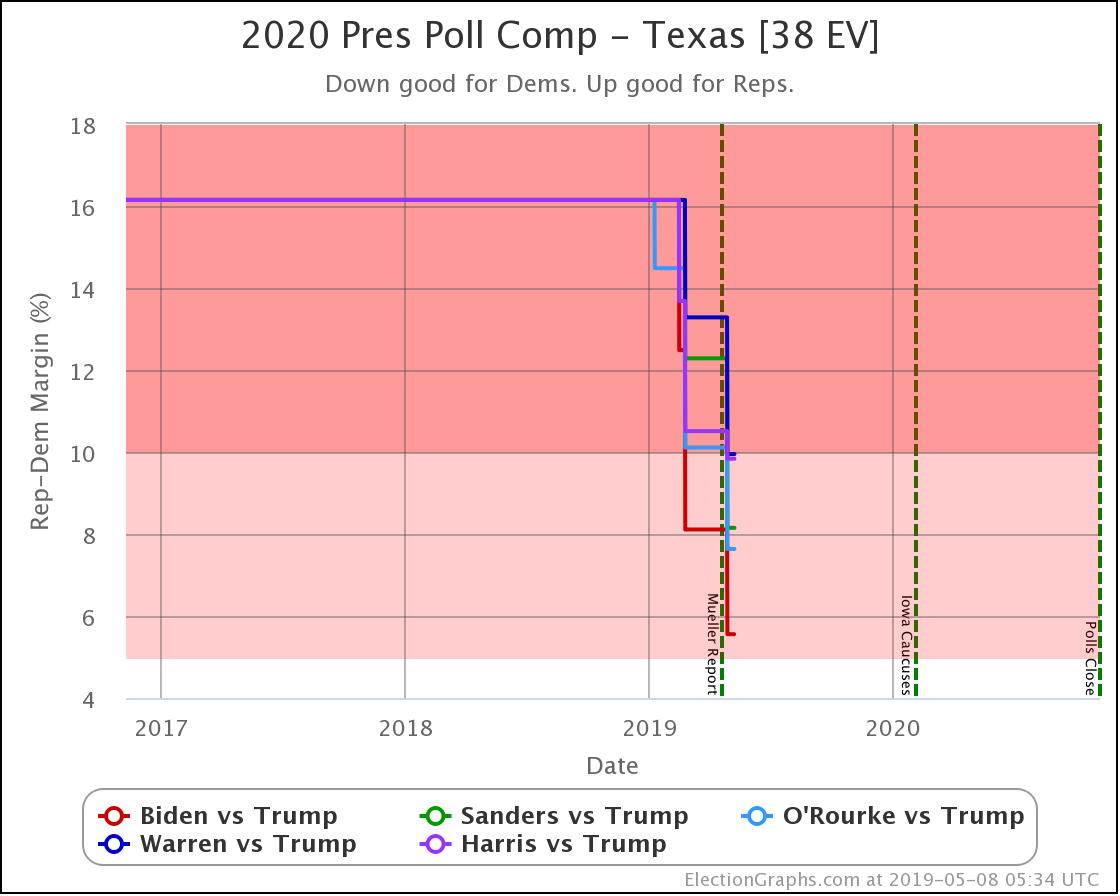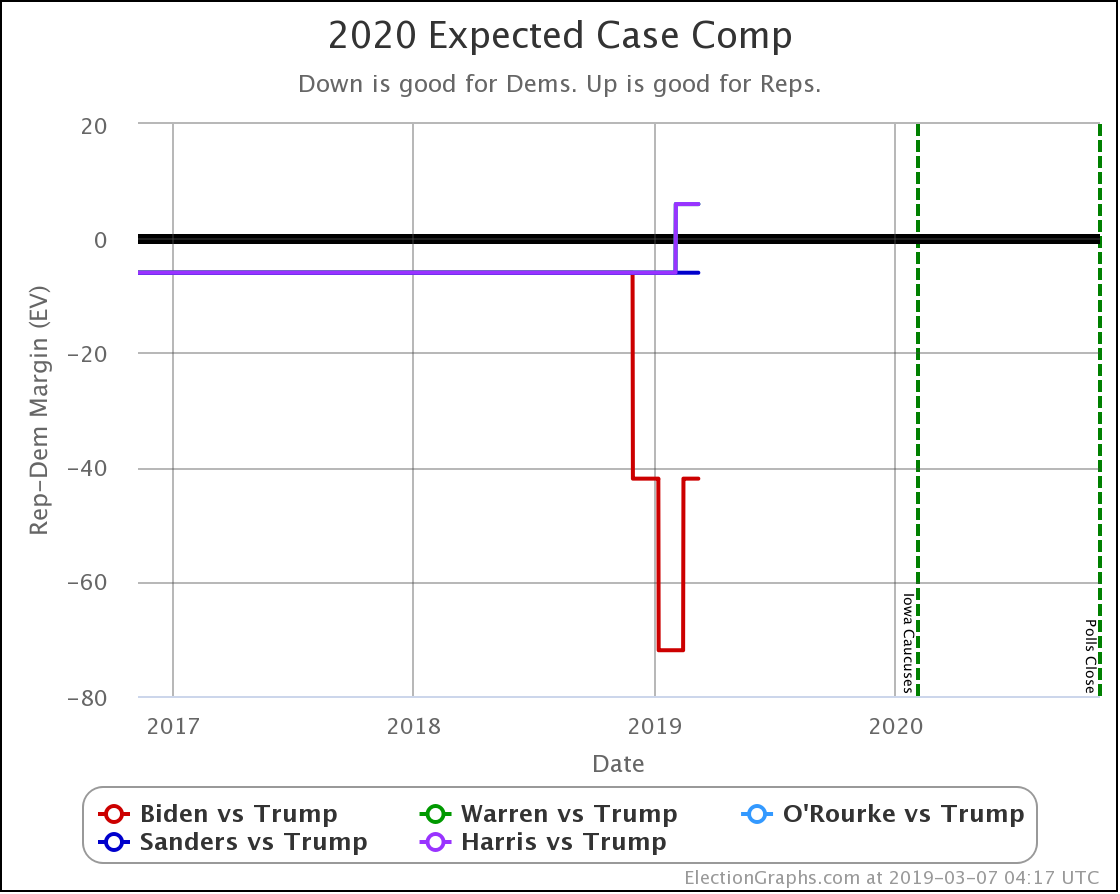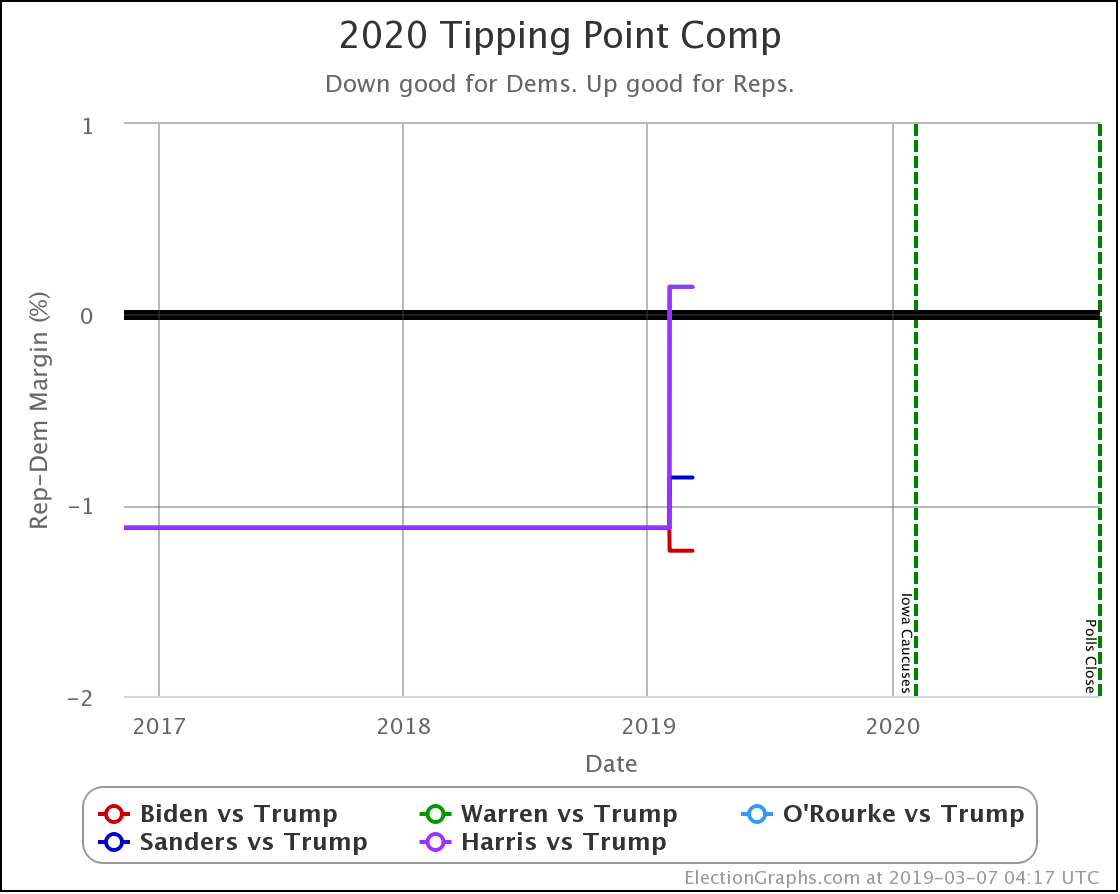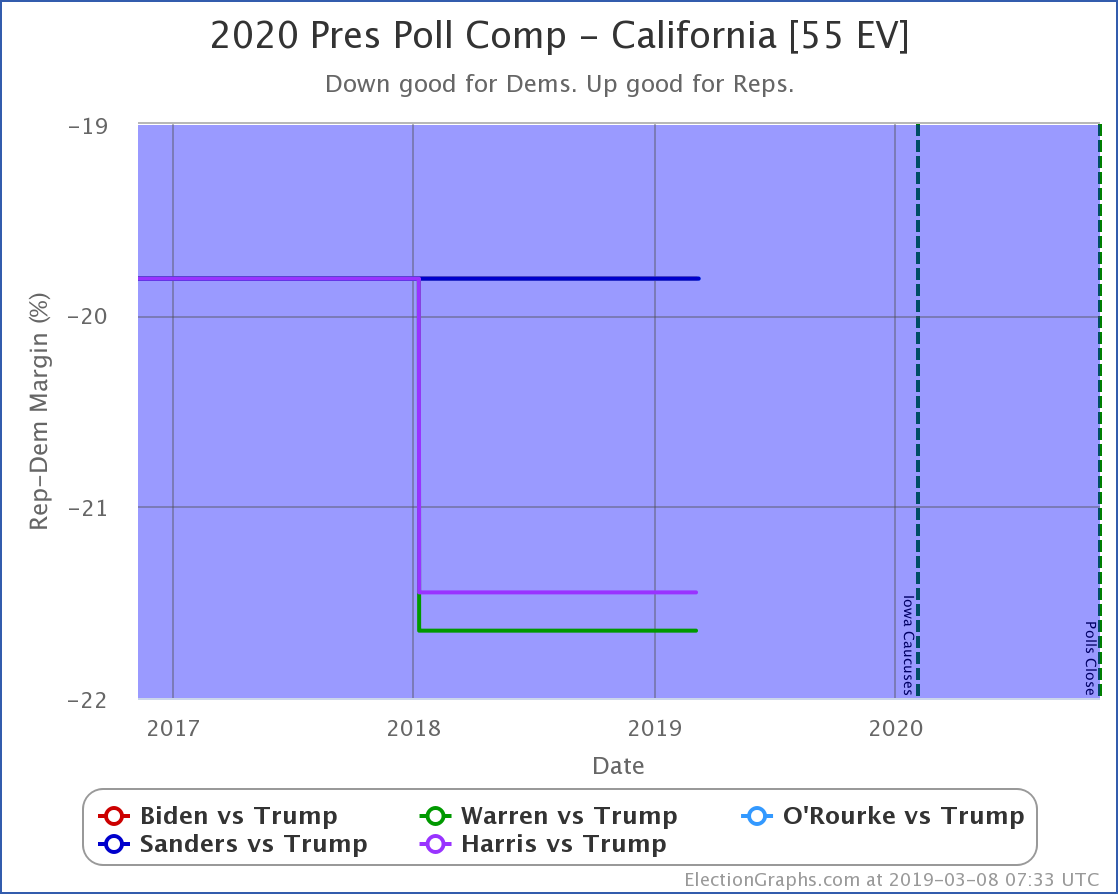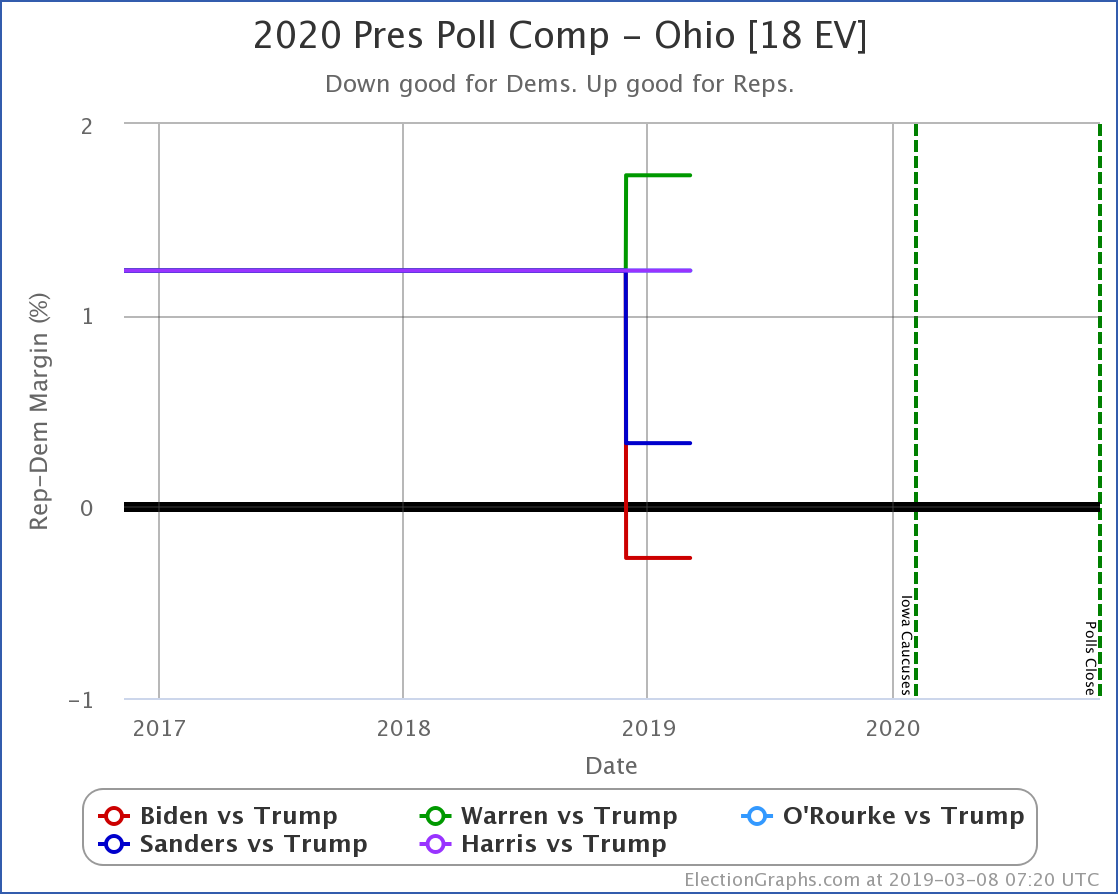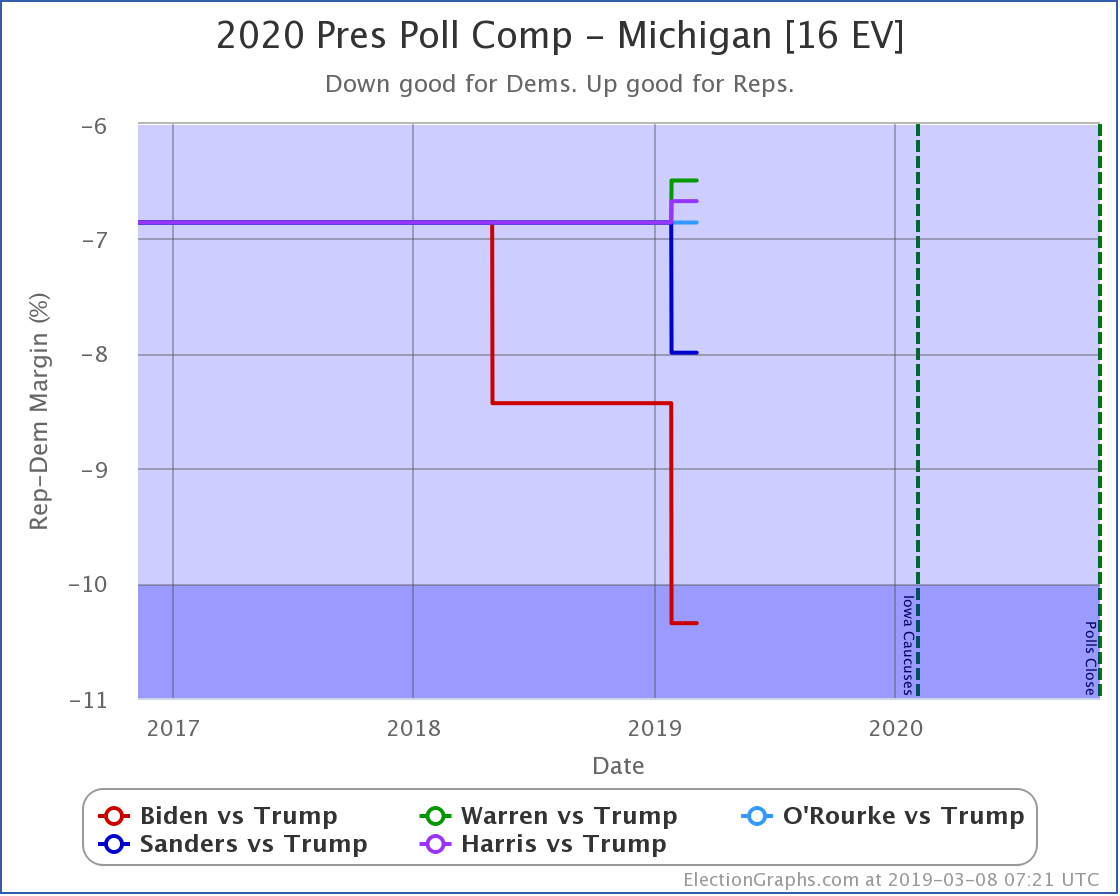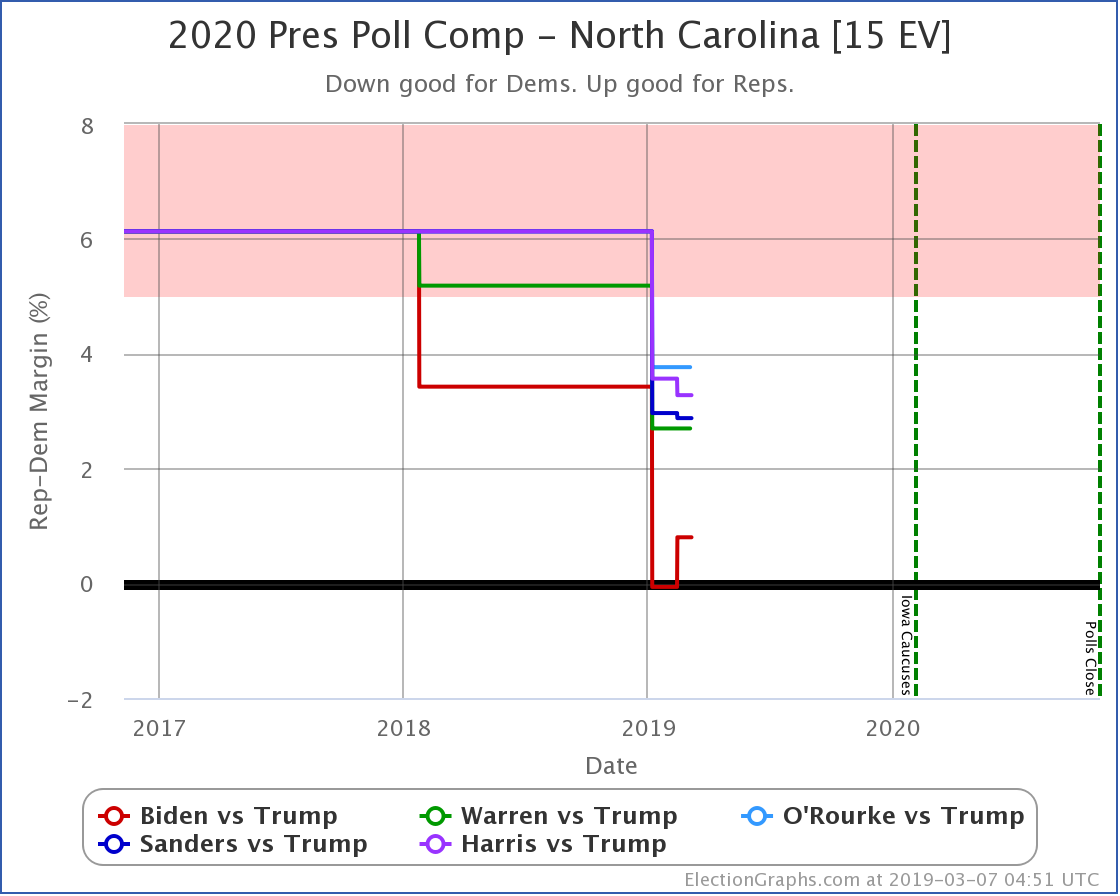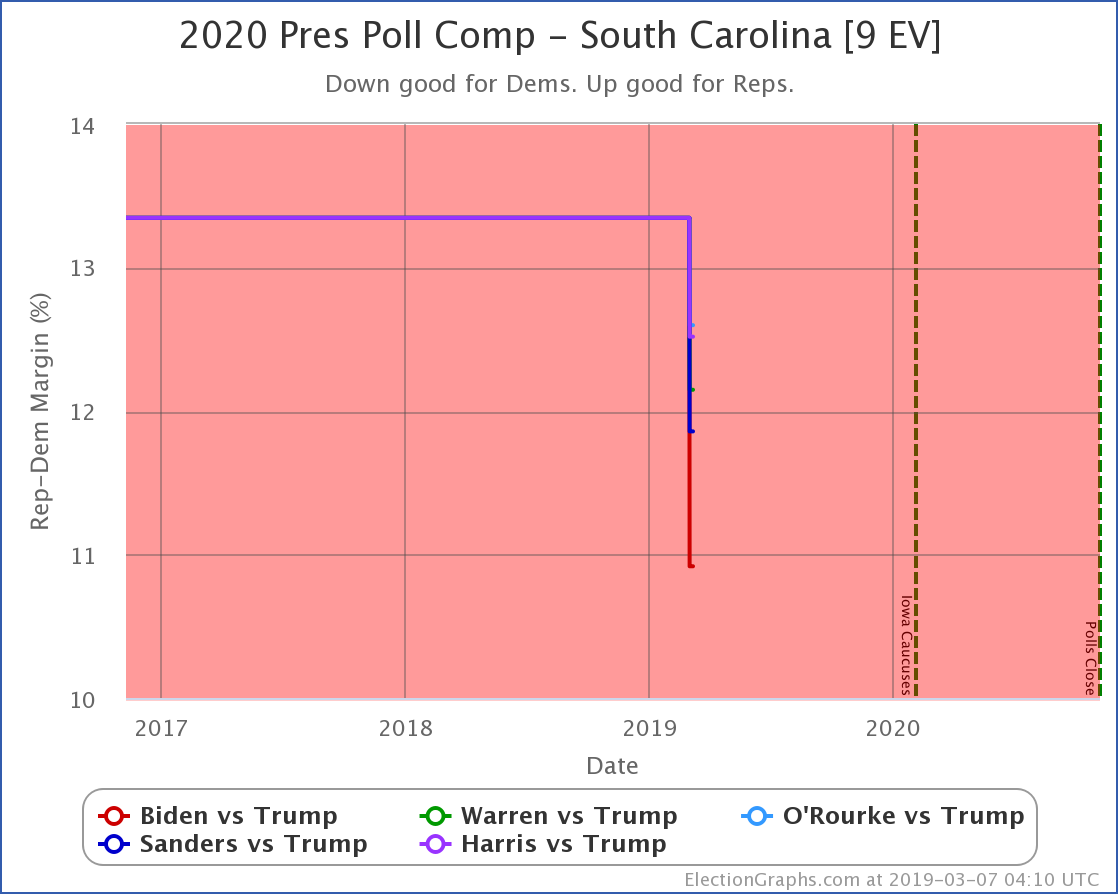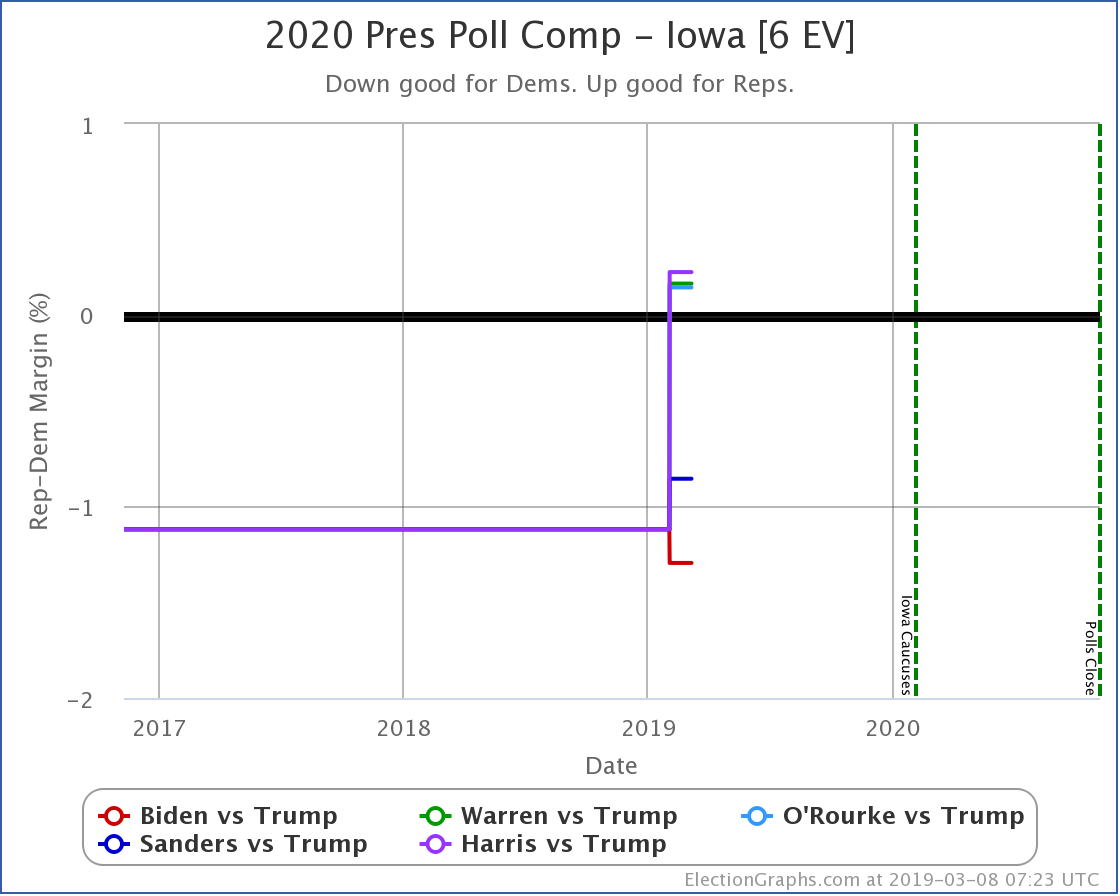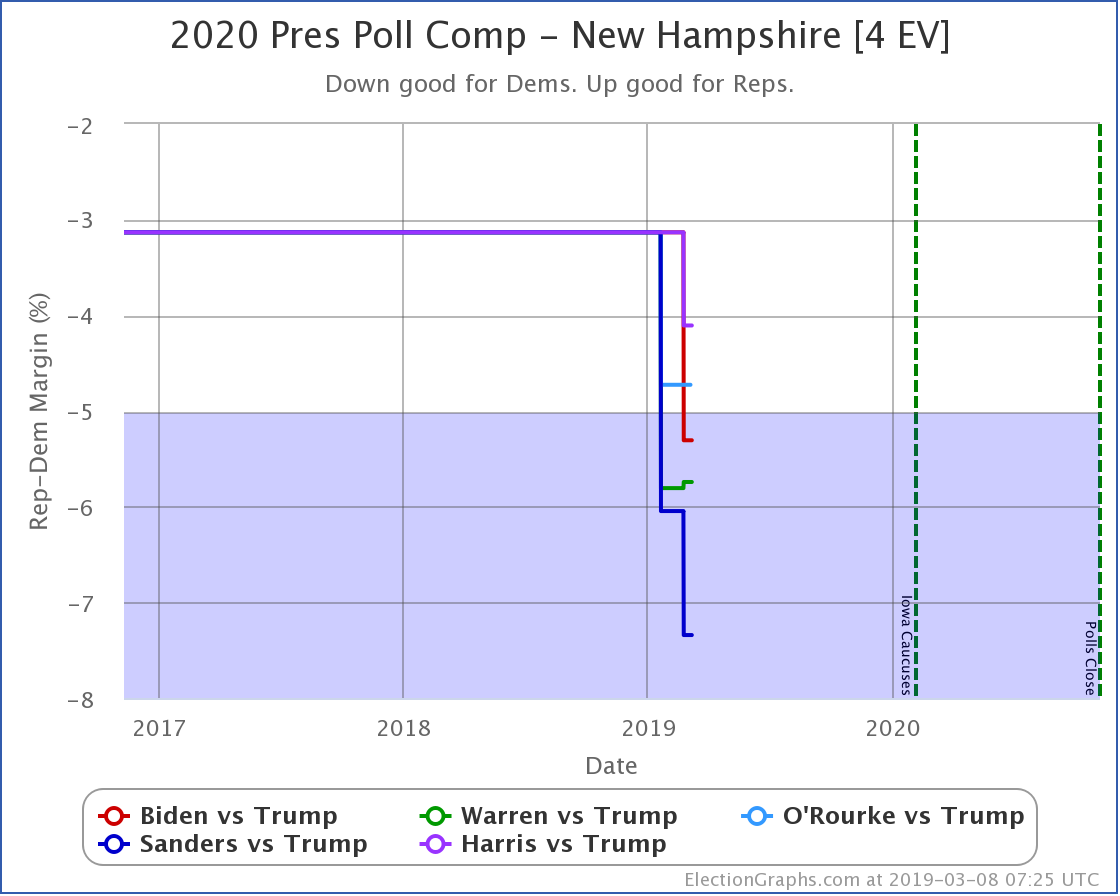Arizona, Florida, and Illinois add to the delegate totals as a result of primaries on March 17th. Although initially scheduled for the same day, Ohio's governor and health department delayed that state's election due to the coronavirus pandemic. Even without Ohio, there was a nice haul of 441 delegates for the evening.
Going into the evening, Biden needed at least 223 of those delegates (50.52%), to be on a winning pace. By contrast, Sanders needed 255 delegates (57.78%).
We had discussed after the March 10th states how this was an almost unreachable bar for Sanders. That winning at that level would require a seismic change in the state of the race.
No such massive realignment happened. Although exact delegate totals will continue to shift as counts become final, as of election night, the March 17th results look like:
- Biden 294 (66.7%)
- Sanders 147 (33.3%)
Biden significantly exceeded the marks he needed. Sanders came nowhere near where he would have had to have been.
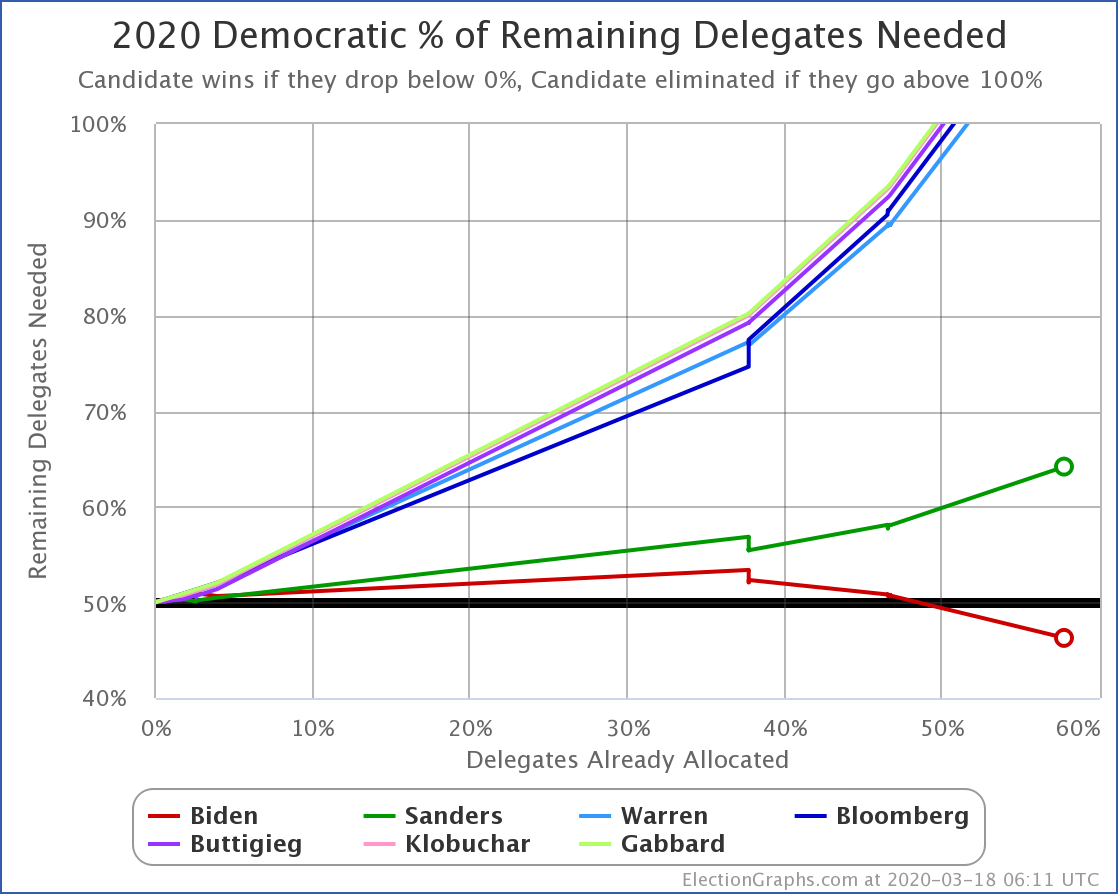

Everybody else other than Biden and Sanders has now been mathematically eliminated.
Looking at the "% of Remaining Delegates Needed" chart, you can see that Biden's curve heads downward, while Sanders's is clearly on a dramatic upswing.
At this point, Sanders would need 64.19% of the remaining delegates to catch up and win. Absent scenarios where Biden drops out for health reasons, or something just as catastrophic, there is no reasonable scenario where Sanders wins the remaining races by an average 64% to 36% margin.
We'll keep tracking things, just in case something extraordinary does happen. Because after all, given how 2020 is going, you never know.
But really, the Democratic race is over now. It was a stretch not to say that a week ago. But now, it is undeniably over.
Biden will be the Democratic nominee.
Oh. And look at this…

Although Weld did earn a single solitary delegate along the way (who may or may not make it to the convention floor), Trump clinched the Republican nomination with the March 17th results.
So we're looking at Biden vs. Trump for the general election.
As of the morning of March 18th, that race looks like this:
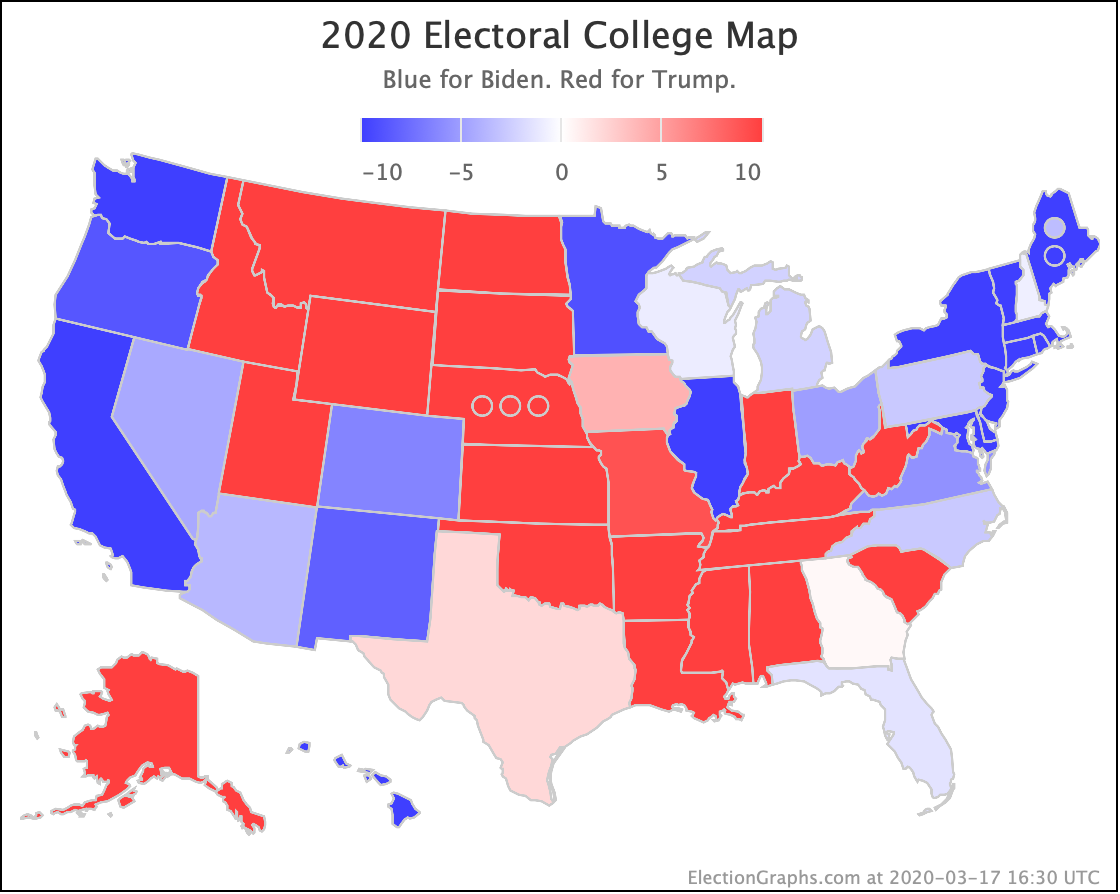
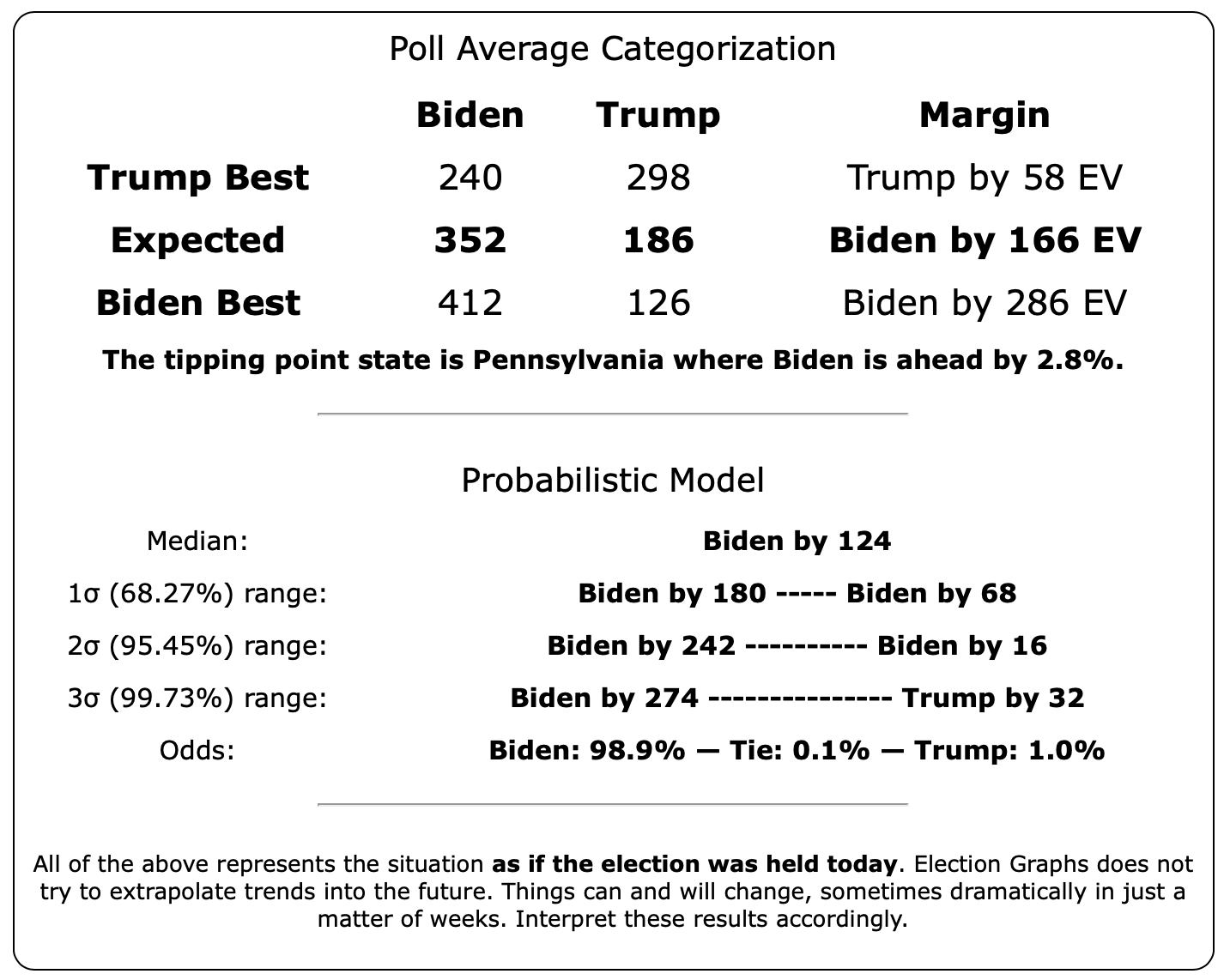
117.3 days until the Democratic National Convention.
159.3 days until the Republican National Convention.
230.5 days until polls start to close on Election Night 2020.
The real race is just beginning. Get ready.
Update 2020-03-19 00:51 UTC: Today Bloomberg gives up 2 California delegates to Biden. New totals: Biden 1215, Sanders 912, Others 171. Biden needs 46.16% of the remaining delegates to win. Sanders needs 64.19%.
Update 2020-03-20 02:39 UTC: Today Biden gives up 1 California delegate to Sanders. New totals: Biden 1214, Sanders 913, Others 171. Biden needs 46.22% of the remaining delegates to win. Sanders needs 64.13%.
Update 2020-03-23 00:19 UTC: Today Warren gives up 1 Utah delegate to Sanders. New Totals: Biden 1214, Sanders 914, Others 170. Biden needs 46.22% of the remaining delegates to win. Sanders needs 64.07%.
Update 2020-03-24 00:20 UTC: Today Warren and Bloomberg give up 2 delegates each in Utah. Of those Sanders gets 3 and Biden gets 1. New totals: Biden 1215, Sanders 917, Others 166. Biden needs 46.16% of the remaining delegates to win. Sanders needs 63.89%.
Update 2020-03-25 00:42 UTC: Today we have results from Democrats Abroad: Sanders 9, Biden 4. In addition some revisions to Maine, North Carolina, Utah, and Washington netting: Bloomberg +3, Biden +1, Sanders -1, Warren -3. New totals: Biden 1220, Sanders 925, Others 166. Biden needs 46.22% of the remaining delegates to win. Sanders needs 63.91%.
Update 2020-03-29 04:35 UTC: Updates today from California, Massachusetts, and North Carolina. Net change: Biden +3, Warren -1, Bloomberg -2. New totals: Biden 1223, Sanders 925, Others 163. Biden needs 46.04% of the remaining delegates to win. Sanders needs 63.91%.
Update 2020-03-30 09:18 UTC: Updates today from Virginia and Florida. Net Change: Biden +1, Warren +1, Sanders -2. New totals: Biden 1224, Sanders 923, Others 164. Biden needs 45.98% of the remaining delegates to win. Sanders needs 64.03%.
Update 2020-04-01 02:27 UTC: One delegate in Massachusetts moves from Warren to Sanders in today's update to the estimate. New totals: Biden 1224, Sanders 924, Others 163. Biden needs 45.98% of the remaining delegates to win. Sanders needs 63.97%.
Update 2020-04-02 00:20 UTC: In today's update to our estimates, one delegate in Virginia moves from Warren to Biden. New totals: Biden 1225, Sanders 924, Others 162. Biden needs 45.92% of the remaining delegates to win. Sanders needs 63.97%.
Update 2020-04-13 03:51 UTC: Today we added results from Alaska. Biden won 8 delegates, Sanders won 7. Also an update from Texas, with Sanders giving up 3 delegates, 2 to Biden, 1 to Bloomberg. New totals: Biden 1235, Sanders 928, Others 163. Biden needs 45.74% of the remaining delegates to win. Sanders needs 64.31%.
Update 2020-04-14 17:32 UTC: Today we added results from Wisconsin. Biden won 57 delegates, Sanders won 27. New totals: Biden 1292, Sanders 955, Others 163. Biden needs 44.55% of the remaining delegates to win. Sanders needs 66.03%. Sanders also officially dropped out since yesterday's update.
Update 2020-04-18 02:03 UTC: An update from Idaho today. Biden takes another delegate from Sanders. New totals: Biden 1293, Sanders 954, Others 163. Biden needs 44.49% of the remaining delegates to win. Sanders needs 66.09%.
Update 2020-04-20 16:08 UTC: Today we add the results from Wyoming. Biden won 10 delegates, Sanders won 4. New totals: Biden 1302, Sanders 958, Others 163. Biden needs 44.24% of the remaining delegates to win. Sanders needs 66.43%.
Update 2020-04-28 03:11 UTC: Today New York canceled their primary since all but one candidate has dropped out. They gave all 274 delegates to Biden. In addition, an update to the Arizona totals, moving one delegate from Biden to Sanders. New totals: Biden 1576, Sanders 959, Others 163. Biden needs 32.40% of the remaining delegates to win. Sanders needs 80.56%.
Update 2020-04-29 15:57 UTC: Adding in the results from Ohio: Biden 155, Sanders 21. In addition, one delegate moves from Warren to Sanders in California. New totals: Biden 1691, Sanders 981, Others 162. Biden needs 26.20% of the remaining delegates to win. Sanders needs 88.21%.
Update 2020-05-04 03:04 UTC: Today we get the results for Kansas: Biden 29, Sanders 10. New totals: Biden 1720, Sanders 991, Others 162. Biden needs 24.50% of the remaining delegates to win. Sanders needs 90.42%.
Update 2020-05-06 15:47 UTC: In today's update, a court ruled that NY's decision to cancel their primary and give all the delegates to Biden was invalid and a primary should happen after all. So Biden loses 274 delegates. New totals: Biden 1446, Sanders 991, Others 162. Biden needs 39.49% of the remaining delegates to win. Sanders needs 72.46%.
Update 2020-05-13 05:11 UTC: Today we have results for Nebraska. 29 delegates for Biden. New totals: Biden 1475, Sanders 991, Others 162. Biden needs 38.19% of the remaining delegates to win. Sanders needs 74.02%.
Update 2020-05-15 04:05 UTC: Today an update in Wisconsin moving one delegate from Biden to Sanders. New totals: Biden 1474, Sanders 992, Others 162. Biden needs 38.27% of the remaining delegates to win. Sanders needs 73.95%.
Update 2020-05-18 01:06 UTC: Today Massachusetts moves 8 delegates from Warren to Biden. New totals: Biden 1482, Sanders, 992, Others 154. Biden needs 37.68% of the remaining delegates to win. Sanders needs 73.95%.
Update 2020-05-20 16:20 UTC: Today we have results from Oregon: Biden 47, Sanders 14. New totals: Biden 1529, Sanders 1006, Others 154. Biden needs 35.81% of the remaining delegates to win. Sanders needs 76.36%.
Update 2020-05-21 02:44 UTC: Update from Oregon. One delegate moves from Biden to Sanders. New totals: Biden 1528, Sanders 1007, Others 154. Biden needs 35.89% of the remaining delegates to win. Sanders needs 76.28%.
Update 2020-05-24 19:18 UTC: Today we have results from Hawaii: Biden 16, Sanders 8. New totals: Biden 1544, Sanders 1015, Others 154. Biden needs 35.31% of the remaining delegates to win. Sanders needs 77.09%.
Update 2020-06-03 19:08 UTC: Today we have updates from DC, IN, MD, MT, NM, PA, RI, and SD: Biden 424, Sanders 55. New totals: Biden 1968, Sanders 1070, Others 154. With that Sanders is mathematically eliminated from winning the nomination absent other candidates losing delegates. Biden still needs 2.92% of the remaining delegates to clinch though.
Update 2020-06-05 04:53 UTC: Updates from Indiana and New Mexico today. Net change, one delegate moves from Biden to Sanders. New totals: Biden 1967, Sanders 1071, Others 154. All other candidates have been mathematically eliminated, but Biden still needs 3.05% of the remaining delegates to clinch.
Update 2020-06-06 16:18 UTC: Updates from IA, IN, PA, and RI today. Net Change: Biden +17, Warren -3, Buttigieg -5, Sanders -9. New Totals: Biden 1984, Sanders 1062, Others 146. Some places already have Biden over the magic number, but in our count, he still needs 7 more delegates.
Update 2020-06-07 17:42 UTC: Some places had him there yesterday, but by our count, the Virgin Islands puts Biden over the top today as he gets all 7 delegates there. New totals: Biden 1991, Sanders 1062, Others 146.
For more information:
This post is an update based on the data on the Election Graphs 2020 Delegate Race page. Election Graphs tracks estimates of the convention delegate totals for both parties. The charts, graphs, and maps in the post above are all as of the time of this post. Click through on any image for the current interactive versions of that chart, along with additional details.
Follow @ElectionGraphs on Twitter or Election Graphs on Facebook to see announcements of new blog posts. For those interested in more granular updates of delegate updates or general election polling, follow @ElecCollPolls on Twitter. If you find the information in these posts informative or useful, please consider visiting the donation page.



